
Published on December 1st, 2023 | by Editor

More prize money for SailGP Teams
Published on December 1st, 2023 by Editor -->
The prize money for the SailGP sports league has taken a step forward as the teams approach the mid-point of Season 4. The current terms have had the top three teams from each event gain a share of a purse, and then the top three teams at the end of the season compete in a single $1 million winner-take-all race.
These terms began for Season 3 in 2022-23, with an event purse of $300,000 USD for each of the events – $150k to the winner, $90k to second, and $60k to third. While not enough to fund a team, it kept it interesting.
But it was not a perfect plan as a team that dominated the full season, but stumbled in the final money race, would get nothing. That was voiced by Australian skipper Tom Slingsby , with the terms now getting sweetened beginning at the Abu Dhabi Sail Grand Prix on January 13-14, 2024.
The total prize money at each event will increase to $400,000 USD, to be distributed between the top three sailing teams. But also, the Grand Final prize money will double, from $1M to $2M – while $350K will be awarded to the top team on points ahead of the three-boat Championship Final.

“As the league grows commercially, this prize pool will continue to increase, which is great news for our athletes,” reports league CEO Russell Coutts.
SailGP information – YouTube – How to watch
Season Standings (after five of 13 events; results and total points) 1. Australia (Tom Slingsby), 2-3-2-2-3; 43 points 2. Denmark (Nicolai Sehested), 4-2-4-7-2; 36 3. United States (Jimmy Spithill), 9-5-5-3-1; 32 4. Spain (Diego Botin), 5-1-3-6-6; 32 5. Great Britain (Ben Ainslie), 7-6-1-1-8; 32 6. New Zealand (Peter Burling), 1-7-8-DNC/6-4; 30 7. Canada (Phil Robertson), 3-4-10-5-5; 24 8. France (Quintin Delapierre), 6-8-6-4-7; 24 9. Switzerland (Sebastien Schneiter), 8-9-9-9; 11 10. Germany (Erik Heil), 10-10-7-8-9-10; 8 Notes: • Canada SailGP Team: Docked four points in Season Championship for eight-point penalty at France Sail Grand Prix | Saint-Tropez • Germany SailGP Team: Docked two points in Season Championship for four-point penalty at Oracle Los Angeles Sail Grand Prix • New Zealand SailGP Team: Granted six event points for Italy Sail Grand Prix as unable to compete due to wing damage suffered at France Sail Grand Prix.
Season 4 – 2023 June 16-17 – United States Sail Grand Prix | Chicago at Navy Pier July 22-23 – United States Sail Grand Prix | Los Angeles September 9-10 – France Sail Grand Prix | Saint-Tropez September 23-24 – Italy Sail Grand Prix | Taranto October 14-15 – Spain Sail Grand Prix | Andalucía- Cádiz December 9-10 – Dubai Sail Grand Prix | Dubai*
Season 4 – 2024 January 13-14 – Abu Dhabi Sail Grand Prix | Abu Dhabi February 24-25 – Australia Sail Grand Prix | Sydney March 23-24 – New Zealand Sail Grand Prix | Auckland May 4-5 – Bermuda Sail Grand Prix June 1-2 – Canada Sail Grand Prix | Halifax June 22-23 – United States Sail Grand Prix | New York July 13-14 – SailGP Season 4 Grand Final | San Francisco * Added October 3, 2023
Format for Season 4: • Teams compete in identical F50 catamarans. • Each event runs across two days. • Up to seven qualifying fleet races of approximately 15 minutes may be scheduled for each regatta. • The top three teams from qualifying advance to a final race to be crowned event champion and earn the largest share of the $300,000.00 USD event prize money purse (increases to $400k after Abu Dhabi) that’s divided among the top three teams. • The season ends with the Grand Final, which includes the Championship Final Race for the top three teams in the season standing with the winner claiming the $2 million USD prize. • The top team on points ahead of the three-boat Championship Final will be awarded $350,000.00.
For competition documents, click here .
Established in 2018, SailGP seeks to be an annual, global sports league featuring fan-centric inshore racing among national teams in some of the iconic harbors around the globe.
Source: SailGP

Tags: SailGP
Related Posts
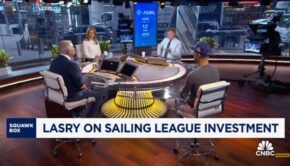
VIDEO: SailGP on CNBC Squawk Box →
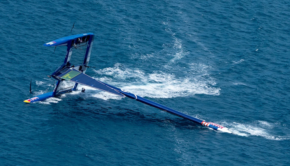
Rethink needed for US SailGP Team →
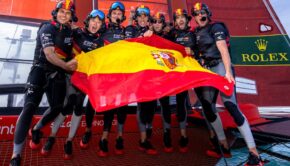
Spain wins Bermuda SailGP →
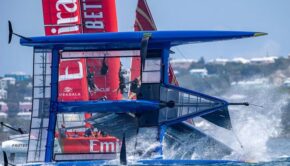
US SailGP Team joins the “crash club” →
© 2024 Scuttlebutt Sailing News. Inbox Communications, Inc. All Rights Reserved. made by VSSL Agency .
- Privacy Statement
- Advertise With Us
Get Your Sailing News Fix!
Your download by email.
- Your Name...
- Your Email... *
- Comments This field is for validation purposes and should be left unchanged.

- Motorcycles
- Car of the Month
- Destinations
- Men’s Fashion
- Watch Collector
- Art & Collectibles
- Vacation Homes
- Celebrity Homes
- New Construction
- Home Design
- Electronics
- Fine Dining
- Les Marquables de Martell
- Mira Villas
- Panther National
- Reynolds Lake Oconee
- Saratoga Spring Water
- Wynn Las Vegas
- 672 Wine Club
- Sports & Leisure
- Health & Wellness
- Best of the Best
- The Ultimate Gift Guide
Australia Wins SailGP, the Formula 1 of Yacht Racing, in Dramatic Fashion
Boat collisions, brutal winds and a whale wandering into the racecourse. in the end, the aussies won sailgp glory and the $1 million prize., michael verdon, michael verdon's most recent stories.
- The Billionaire Space Race Is About to Heat Up Again—Here’s What You Need to Know
- Brabus’s New Flagship Is a Loud, Speedy 45-Foot Dayboat. We Hopped Onboard.
- Taylor Swift Flew 178,000 Miles Last Year, and This College Student Can Show You Where
- Share This Article

SailGP, the extreme Formula One version of yacht racing, ended its second season yesterday, with the Australian team claiming the championship over teams from Japan and the USA. The final weekend of the series involved multiple collisions, challenging winds and even a whale on the racecourse that forced a restart to the championship final race.
SailGP uses 50-foot foiling F50 raceboats that can reach speeds of 61 mph. Add in the boats’ pinpoint turning abilities, athleticism of the five racers who have to leap across the boat at 55-plus mph, white-knuckle race maneuvers and crashes, and the sport has attracted gatherings of thousands of spectators during its 10-race series around the world.
Related Stories
- Car of the Week: This Rare, Restored ’65 Aston Martin DB5 Drop-Top Could Fetch $1.3 Million at Auction
A Legendary 36-Foot Cigarette Powerboat Is Heading to Auction This Summer
Watch: rossinavi’s first hybrid catamaran uses artificial intelligence to ensure greener cruising.
The SailGP series was set up as an alternative to the much slower sport of monohull racing, modeled after other professional franchise sports like the NFL and MLB with dedicated teams from different countries.

In the winner-take-all season finale, the Aussies emerged victorious over teams from Japan and the USA. Courtesy SailGP
Despite the teams accruing points all season, last weekend’s series was a winner-take-all event.
After two days of racing, Tom Slingsby’s Australia SailGP was victorious. The lead up to the final race was defined by two dramatic collisions: Rookie Spanish driver Jordi Xammar crashed into the stern of the US team’s catamaran and tore a hole in it. That forced the US team to attempt frantic, on-water repairs before the Grand Final. In another race, the teams from France and New Zealand also collided.
“They can sail four times faster than the wind,” America’s Cup guru and SailGP founder Russell Coutts told Robb Report recently . “There’s an element of danger we’re not trying to disguise.”

The team from Spain crashed into the stern of the US team during the first day’s racing, prompting the Americans to perform a frantic, on-water repair for the finals. Courtesy SailGP
In the final race, the US team took an early lead, but the race was abandoned after a whale was sighted on the course. In the restart, Australia took the lead and dominated throughout. The team claimed a $1 million prize for the season. “More important than the money is that Australia came out on top and we can call ourselves the best in the world,” said Slingsby after the race. “Money comes and goes and glory lasts forever, I know that’s a saying, but we really feel it right now.”
Jimmy Spithill, leader of the US team, was disappointed but gracious. “At the end of the day you really have to credit the Aussies. They have been the benchmark team all season and to come back and do it back to back. It’s very impressive, they deserve the win,” he said in the post-event press conference.
Part of SailGP’s mission is to promote ocean protection—hence, restarting the race when the whale appeared—and sustainability. An important, secondary contest that took place during the season was the Impact League, which measured sustainability efforts by each team, from the carbon footprint of their boats, to how they travel to events, to measuring use of plastic.

The US team had the lead in the final race, but a whale swam into the racecourse, forcing a restart. In the second version, the Australian team dominated. Courtesy SailGP
New Zealand’s team claimed the Impact League title, handing over the $100,000 prize to the Live Ocean foundation. Great Britain and Australia won $35,000 and $15,000 respectively for second and third place, and donated the money to their Race to the Future partners.
Season three of SailGP will begin in Bermuda on May 14 and 15. Ten teams, including newcomers Switzerland and Canada, will take part in the third season. Events in Chicago, Plymouth, Copenhagen, Saint-Tropez, Cádiz-Andalucía, Dubai, Christchurch have been scheduled, with the final happening again in San Francisco.
Read More On:
- Sailing Yacht
More Marine

The World’s First Superyacht to Use Methanol Fuel Is Now Cruising the High Seas

This New 131-Foot Superyacht Concept Brings High Architecture to the High Seas

Pebble Beach Concours d'Elegance
AUG 14 - 19 Get behind-the-scenes access to this remarkable week honoring automotive brilliance.
Give the Gift of Luxury
Latest Galleries in Marine

‘Monster Munch’ Cigarette 36 in Photos

K Superyacht in Photos
More from our brands, the 10 best floral designer bags to invest in this summer for timeless style, the unusually public-facing push to settle house v. ncaa, ‘sound of freedom’ producers angel studios to. distribute wwii limited series ‘truth & conviction’ starring rupert evans and ewan horrocks (exclusive), a $5 m. yayoi kusama painting that has never been exhibited leads bonhams hong kong sale, the best yoga mats for any practice, according to instructors.
Yachting Monthly
- Digital edition

Kirsten Neuschafer wins 2022 Golden Globe Race and makes history
- Katy Stickland
- April 27, 2023
Kirsten Neuschafer has become the first woman to win a solo, round the world yacht race after winning the 2022 Golden Globe Race
Kirsten Neuschafer made it very clear from the start that she was aiming to win the 2022 Golden Globe Race . And now the South African skipper has achieved her goal, and made history in the process.
After just over 235 days at sea, the sailor crossed the finish line off Les Sables d’Olonne in France at 9pm CEST on 27 April 2023 and became the first woman to win a solo, round the world yacht race.
After a painfully slow final few miles as she ghosted towards the finish, Neuschafer actually crossed the finish line around 10 hours behind competitor, Simon Curwen, but a previous stop for repairs for the British sailor had already relegated him to the Chichester class (for those who make a single landfall).

No wind, meant it took hours for Kirsten Neuschafer to sail the Minnehaha over the finish line. Credit: Katy Stickland
Second-time Golden Globe Race competitor, Abhilash Tomy will be the next boat across the finish line, lying some 100nm astern of Neuschafer. That these three will finish within the space of a couple of days after 235 days at sea speaks to the high level of competition between these front runners.
Tired but jubilant, the focussed 39-year-old, who throughout much of the race had no idea she was leading, celebrated a hard-fought victory. Her Cape George 36 cutter, Minnehaha was then towed up the channel to the pontoon as thousands of people cheered and applauded her incredible achievement.
Among them were 2022 Golden Globe Race skippers Ian Herbert-Jones, who had just arrived from Cape Town, having been rescued from his dismasted boat just weeks before, and French sailor Damien Guillou , whose race ended after windvane steering failure on approach to Cape Town.
‘I feel very emotional and honoured,’ said Neuschafer after finishing the race. ‘I am never going to forget the welcome. I want to thank my fellow skippers as without them, there would have been no race. Simon was very difficult as he was always in front of me and I knew Abhilash was close, and this encouraged me to navigate as quickly as possible.’

Kirsten Neuschafer – the winner of the 2022 Golden Globe Race and the first woman to win a solo round the world yacht race. Credit: Katy Stickland
1997 Vendée Globe veteran Catherine Chabaud, the first female sailor to race solo non stop around the world without assistance, and the winner of the 2018 Golden Globe Race, Jean-Luc van den Heede, were there to greet Neuschafer as she stepped off her boat after nearly 8 months at sea.
Her official finishing time was 233 days, 20 hours, 43 minutes and 47 seconds. This takes into account the 35 hour time compensation and 30 litre fuel allowance given to her following her role in the rescue of fellow race skipper, Tapio Lehtinen,
Neuschafer said she was driven to keep going, even in calms and the doldrums on the way up the Atlantic, where she regularly went swimming to deal with the frustration.
‘I never thought I would give up; there was no reason to think this as I had full confidence in the boat. I never doubted I would get to the finish line.’

Catherine Chabaud, the first female sailor to race solo non stop around the world without assistance was there to greet Kirsten Neuschafter on. her arrival. Credit: Katy Stickland
Throughout the 2022 Golden Globe Race , Kirsten Neuschafer has fought to be at the front of the fleet, her ambition to win driving her more than many of the other entrants.
She deliberately chose a boat that she believed could win the race and survive the Southern Ocean.
Speaking to Yachting Monthly from Prince Edward Island, where she was refitting the boat, she said: ‘From the outset it wasn’t a question of taking any boat that was available and in my price range; it was to choose a boat that I believe can win and can survive the Southern Ocean , and then get that boat at any cost, no matter how much work.’

Kirsten Neuschafer in the lead, in early March 2023. Credit: Kirsten Neuschafer/GGR 2022
Her choice of the Cape George 36 paid off. Minnehaha has the longest LWL in the fleet, and with a generous cutter rigged 806sq ft sail plan, the boat achieved slightly higher speeds than her counterparts.
As a result, she holds the 2022 Golden Globe Race records for the best 4 hour speed average (9.80 knots), best 24 hour distance (218.9nm) and best 7 day distance (1,216.2nm).
The boat’s performance was evident after her average start in the race, but she constantly pushed, choosing to hand steer the boat rather than just rely on her Hydrovane windvane steering to make up for lost ground. Her disappointment coming 6th through the first race gate at Lanzarote was evident, but her motivation was stronger.

Kirsten Neuschafer prepared Minnehaha on Prince Edward Island. Credit: Patricia Richard
Having exited the Bay of Biscay in 10th place, she was soon climbing the leader board. Coming down the Atlantic, she chose a more coastal route to keep the island of Trinidade to port; a strategy to make the most of the current and receive weather information via her weather fax so she could identify the location of the South Atlantic High.
She took the longer, southern route with a more comfortable point of sail to reach the race’s second gate at Cape Town; a strategy that paid off when she was second through the gate behind the then race leader Simon Curwen .
Article continues below…

Kirsten Neuschafer: Golden Globe Race 2022 skipper
Kirsten Neuschafer has plenty of Southern Ocean experience, which she hopes will be an advantage as she takes part in…

Golden Globe Race: Kirsten Neuschafer: ‘I’ll give it my best shot but I’m pretty disillusioned’
Third place Golden Globe Race skipper Kirsten Neuschafer has been left frustrated by the lack of wind, which has also…
By this time, Curwen was extending his lead as he began crossing the Indian Ocean. Days after leaving Cape Town, Kirsten Neuschafer diverted from her race route to rescue fellow entrant Tapio Lehtinen, after his Gaia 36, Asteria sank around 450 miles south east of South Africa.
At the time, Neuschafer was 105 miles from Lehtinen’s position; she hand steered through the night, posting speeds of 7 knots to reach him the following morning. Once safely onboard, they waited for the arrival of the Hong Kong-flagged bulk carrier Darya Gayatri , which would take Lehtinen to port.

Kirsten Neuschafer and Tapio Lehtinen share rum after the rescue of the Finnish skipper from his liferaft. Credit: Kirsten Nesuchafer/GGR 2022
Neuschafer was awarded a 35 hour time compensation and a 30 litre fuel allowance by the Golden Globe Race organisers.
Back in race mode, she pushed hard across the Indian Ocean, gaining 500 miles on Curwen and arrived just 29.5 hours behind him in Hobart. She briefly took first place when passing through Tasmania but then became trapped in no wind zones around New Zealand for several days.
This allowed Curwen to extend his lead by 900 miles; by this time, he was also sailing in a different weather system to Neuschafer and her nearest rival, Abhilash Tomy .
Neuschafer and Tomy swapped second and third place positions across the South Pacific, Neuschafer often frustrated by the calms, and her inability to find the better wind, which was often in the race’s Pacific exclusion zone.
She dived for 8 hours to remove the barnacles from the boat’s hull to improve her speed.
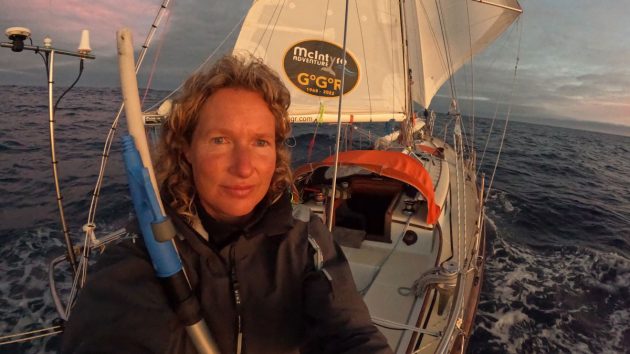
Kirsten Neuschafer/ rounded Cape Horn on Day 164 of the race. Credit: Kirsten Neuschafer/GGR 2022
Curwen, who had a 1,200 mile lead, then reported the failure of his Hydrovane self-steering gear , which forced him to make a 1,000 mile detour to Chile to make repairs; this also put him in the Chichester Class for entrants who make one stop.
This meant both Neuschafer and Tomy were back in the race for first place.
After 150 days of racing, Neuschafer took the lead and was the first to round Cape Horn on 15 February 2023.
But her routing decision up the Atlantic allowed Tomy to make gains in his Rustler 36, Bayanat , despite battling problems with his Wind Pilot windvane steering, his rig, rigging, and having to hand-stitch his mainsail after it ripped in two.

Kirsten Neuschafer took a more easterly route up the Atlantic. Credit: Kirsten Neuschäfer/GGR2022
Unlike Tomy, who stayed close to the rhumb line, Kirsten Neuschafer, who was sailing more conservatively due to a bend in Minehaha’s bowsprit, decided to take a more easterly route.
At the time she said: ‘I read up in Ocean Passages for the World what is the best route for this time of year and the route is to pass 80 miles south of the Falklands and make for a point to the east of 35°S and 30°W at this time of year, and this is what I’ve been doing. I don’t know if it was a good idea to follow the suggestions or not.’
Doubting her easterly route, she took a more northerly route; it was a decision which would prove incredibly frustrating for Kirsten Neuschafer, who sailed through more light winds than any other 2022 Golden Globe Race sailor while sailing up the Atlantic, and meant she crossed a very wide doldrums.
This allowed both Tomy and Curwen to make gains on her position before Curwen in his Biscay 36, Clara , took the lead and become the first of the 2022 Golden Globe Race fleet to cross the finish line.
Positions of the Golden Globe Race 2022 skippers on 27 April 2022 at 2100 CEST
Kirsten Neuschafer, (South Africa), Cape George 36 cutter, Minnehaha – FINISHED 1st Abhilash Tomy , (India), Rustler 36, Bayanat – 100nm to the finish Michael Guggenberger , (Austria), Biscay 36, Nuri – 1800nm to the finish
Chichester Class:
Simon Curwen , (UK), Biscay 36, Clara – FINISHED 1st (Chichester Class) Jeremy Bagshaw , (South Africa), OE32, Olleanna – 2600nm to the finish
Edward Walentynowicz , (Canada), Rustler 36, Noah’s Jest Guy deBoer , (USA), Tashiba 36, Spirit Mark Sinclair (Australia), Lello 34, Coconut Pat Lawless , (Ireland), Saltram Saga 36 , Green Rebel Damien Guillou , (France), Rustler 36, PRB Ertan Beskardes , (UK), Rustler 36, Lazy Otter Tapio Lehtinen , (Finland), Gaia 36, Asteria Arnaud Gaist , (France), Barbican 33 Mk 2, Hermes Phoning Elliot Smith , (USA), Gale Force 34, Second Wind Guy Waites (UK), Tradewind 35, Sagarmatha Ian Herbert-Jones (UK), Tradewind 35, Puffin
Enjoyed reading Kirsten Neuschafer wins 2022 Golden Globe Race and makes history?
A subscription to Yachting Monthly magazine costs around 40% less than the cover price .
Print and digital editions are available through Magazines Direct – where you can also find the latest deals .
YM is packed with information to help you get the most from your time on the water.
- Take your seamanship to the next level with tips, advice and skills from our experts
- Impartial in-depth reviews of the latest yachts and equipment
- Cruising guides to help you reach those dream destinations
Follow us on Facebook , Twitter and Instagram.
- Share full article
Advertisement
Supported by
Russell Coutts Likes Sailing Races With Big Money at Stake
One of the great sailors in history now runs an elite racing series for high-speed yachts. SailGP will end its season this weekend with $1 million on the line.

By Matthew Futterman
Russell Coutts can make a pretty good argument for being history’s greatest yachtsman. His achievements include being a part of five teams that won the America’s Cup and winning an Olympic gold medal in 1984.
His latest endeavor may be more challenging than winning any yacht race. Coutts is the chief executive of SailGP, the yacht racing series featuring high-speed sailboats that reach speeds of more than 50 knots.
SailGP, the brainchild of Larry Ellison , the yachting enthusiast and a founder of the software company Oracle, debuted this year and is trying to make its mark in the sports consciousness so people pay attention to sailing more than every few years when the America’s Cup is contested. The series, in which teams compete under national banners, will hold its finale this weekend in Marseille, France, where strong winds are in the forecast and a $1 million prize is on the line, a rarity for what has largely been an amateur’s endeavor.
“This is all about establishing which team can respond best under the pressure,” Coutts said in an interview this week in which he talked about the state of his start-up, his sport, and why his time competing on the high seas has passed.
This conversation has been edited for clarity and condensed .
Why did SailGP break with tradition and put a winner-take-all $1 million purse on the line?
It’s good to have a situation where guys feel pressure and real desire to win. Who wouldn’t want to win that prize? It adds to the drama. Who can respond to the pressure in that final race?
How rare is it in sailing for there to be this kind of prize on the line?
It’s rare for there to be this much prize money. Normally, when you get prize money it’s not either you win or get nothing. In future years we might expand that and distribute some to the rest of the podium, but it’s great to have that one 10-minute race with all that at stake. It’s a bit like our version of the Olympic 100 meters.
Why has this kind of prize money not traditionally been a part of sailing?
There has never been a consistent format to generate a commercial interest and create a foundation for prize money. There have been attempts, but there has never been a format like this where you are racing super high-tech boats and shipping them around the world.
What has worked for SailGP in its first year?
All six teams have tracked under budget. We’ve found the right formula to manage the costs. The budgets are $5 million, and we added $2 million to allow for an upgrade to the boats.
How much do these boats cost?
Around $4 million.
What has surprised you?
We’ve got things to improve, but we are a start-up and we have established ourselves as a global championship series. We’ve delivered great economic return and good audience figures. We had six teams on the water and moved them around the world and shown we can deliver. We’ve almost completed the seventh boat, and we’re expanding the number of venues next year.
So you are satisfied?
Our aim was to provide a consistent championship with consistent dates, venues and teams and format. That has been absent from the sport of sailing. There is no other event that provides that. This is new. This is a long-term structured program instead of discreet events. This is an attempt to mimic what a lot of other sports already had.
Why have the teams from Japan and Australia dominated?
Nathan Outteridge and Tom Slingsby have more experience with this type of boat. They each have very strong teams. There are so many things that have to go right and have to be executed in exactly the right order in maneuvering these boats so it has taken time to build that experience. As that experience grows, the gap is closing rapidly.
Do you watch these races in these crazy fast boats and think of making a comeback?
I’m 57 years old. The one thing you realize is how quickly you have to react, and I do think age will be a factor. It’s not just the physicality, but it’s the ability to make quick accurate decisions. This is an amazing opportunity for these sailors to grow the high performance talent in some of these countries. In the 1980s, the United States was the total dominant force and whatever reason that seeped away. The U.S. has made some strides with youth programs and they are starting to get those sailors coming through. The Australians do have strengths. So do the British. That’s why they are two of the top nations. But the French, Spanish and Germans are rapidly developing.
Did you ever think a sailboat would be able to go this fast?
No, I didn’t. When we put the new wind sails on next year that will jump the speed by a couple knots. We could see 53 knots. That is amazing.

The global authority in superyachting
- NEWSLETTERS
- Yachts Home
- The Superyacht Directory
- Yacht Reports
- Brokerage News
- The largest yachts in the world
- The Register
- Yacht Advice
- Yacht Design
- 12m to 24m yachts
- Monaco Yacht Show
- Builder Directory
- Designer Directory
- Interior Design Directory
- Naval Architect Directory
- Yachts for sale home
- Motor yachts
- Sailing yachts
- Explorer yachts
- Classic yachts
- Sale Broker Directory
- Charter Home
- Yachts for Charter
- Charter Destinations
- Charter Broker Directory
- Destinations Home
- Mediterranean
- South Pacific
- Rest of the World
- Boat Life Home
- Owners' Experiences
- Interiors Suppliers
- Owners' Club
- Captains' Club
- BOAT Showcase
- Boat Presents
- Events Home
- World Superyacht Awards
- Superyacht Design Festival
- Design and Innovation Awards
- Young Designer of the Year Award
- Artistry and Craft Awards
- Explorer Yachts Summit
- Ocean Talks
- The Ocean Awards
- BOAT Connect
- Between the bays
- Golf Invitational
- Boat Pro Home
- Superyacht Insight
- Global Order Book
- Premium Content
- Product Features
- Testimonials
- Pricing Plan
- Tenders & Equipment

The America's Cup: Everything you need to know about the sailing competition
Ahead of the 2021 America's Cup in New Zealand , Elaine Bunting explains everything you need to know about the sailing competition in our handy guide - from America's Cup racing rules and history, to detailing just how fast those hydrofoil boats can go...
The America’s Cup is considered the pinnacle of yacht racing. Every four years, teams compete for the oldest trophy in international sport in yachts that represent the cutting edge of yacht design and technology.
This is a magnet for the world’s most talented sailors. It is notoriously difficult to win, and the opportunity comes only once every four years. Yet the storied history of the Cup has always attracted brilliant minds and been backed by some of the world’s most ambitious and successful businessmen.
The America’s Cup match is held between only two teams, the defender and one challenger. The series that establishes the right to be that challenging team was held through January and February, and provided some genuinely shocking moments.
WHAT HAS HAPPENED SO FAR?
Two of the four challengers were eliminated in the Prada Cup challenger series in January and February. The US team American Magic spectacularly spun out of control and capsized in a high-wind, high-speed mark rounding. Despite rapidly being rebuilt, the team was unable to get the boat fully functional again and was ousted from the Prada Cup without a single win.
The British team INEOS Team UK, led by Sir Ben Ainslie, won the opening round robin series handsomely and were regarded as favourites only to shock fans when they were thrashed 7-1 in the Prada Cup final by the clearly faster Italian team Luna Rossa Prada Pirelli.
So after several brutal gladiatorial rounds, the match is on between old rivals Emirates Team New Zealand and Luna Rossa Prada Pirelli. The stakes are sky-high: whoever wins the America’s Cup not only earns the historic America’s Cup ‘Auld Mug’ trophy, but they get to write the rule for 37th America’s Cup in four years, defining the yacht design, how it is sailed – and to choose the venue where it will all take place.
It is a winner-takes-all format. The America’s Cup is famously a race in which, as Queen Victoria was informed during the first contest in 1851, “there is no second.”
HOW IS THE AMERICA’S CUP WINNER DECIDED?
The challenger, Luna Rossa Prada Pirelli, will race against the defender, Emirates Team New Zealand in the 36th America’s Cup match series starting on 10 March.
There are two races each day on 12, 13 and 14 March with additional days on 15, 16 and 17 March if needed to conclude the first-to-seven wins series.
A choice of race course is decided each day depending on wind conditions, but the courses are all windward-leewards with around 3km between each end and around 1.5km from side to side.
WHAT ARE THE DIFFERENCES BETWEEN THE TEAMS RACING FOR THE AMERICA’S CUP?
Emirates Team New Zealand, yacht Te Rehutai – The home team is the defender, having won the Cup in Bermuda in 2017. Heading it up is the steely Grant Dalton, with eight times America’s Cup campaigner Kevin Shoebridge capably in charge of the sailing side. The design team is also second to none – and between them they all set the rules this time.
The Kiwis boast some of the youngest sailors, who grew up in the era of foiling, notably the wildly gifted Pete Burling as helmsman and his Olympic champion crewmate Blair Tuke, who share a Gold and Silver Medal and six World Championship wins in the high performance 49er class.
The pair works in partnership with the team’s resident Australian Olympian, Glenn Ashby. This successful triumvirate was a crucial ingredient in Emirates Team New Zealand’s last Cup win. Ashby is key to tactical decisions, Blair Tuke is the so-called flight controller in charge of flaps on the foils and rudder, with Peter Burling is steering and coolly making those split-second decisions on the race course.
Their yacht Te Rehutai has many visible differences compared with Luna Rossa. It is a more brutal looking design beside the smooth shaped, elegant Italian boat, and has quite different shaped foils (see ‘How do the America’s Cup yacht work?’): New Zealand’s are almost flat across the wing base, while Luna Rossa’s foils are in a dihedral shape, sloping downwards from a central wing bulb.
These are just the most obvious differences, and there will be many more variations beneath the surface, especially in the complex control systems. Yet despite dissimilarities, the speed differential between teams in the Prada Cup varied only by fractions of a knot, putting the emphasis on dominating pre-start manoeuvres, reading the wind shifts and match racing the opponent. These will all play a part in the Cup match too.
Luna Rossa Prada Pirelli, yacht Luna Rossa - The Italian team, backed by Patrizio Bertelli, is bristling with experience. Italian team boss Max Sirena has been involved in six America’s Cups.
At the wheel, the Italians have a set-up never seen before, with straight-talking Australian Jimmy Spithill helming on starboard and Italian Olympic sailor Francesco Bruni helming on port. When one is steering, the other acts as flight controller and trims the foils.
It is a formidable partnership. Spithill is the most successful Cup sailor in the line-up, having been part of seven campaigns and winning it twice in 2010 and 2013 for Larry Ellison’s US team Oracle. Bruni, meanwhile, has three Olympics behind him and several Cup campaigns himself.
While this unconventional division of control between the two helmsmen prompted observers to shake their heads at first, it has proved highly successful. Spithill has suggested that the arrangement allowed them both to accelerate their skills, while at a very practical level it means no one has to jump out of the cockpit and cross the boat during high-speed G-force tacks and gybes before settling back into continuity in a new position.
Indeed, it has been so successful that Emirates Team New Zealand have been experimenting with changing to the one-helmsman-per-side arrangement, split between Peter Burling and Glenn Ashby. Watch out, this may come into play at some point.
Meanwhile, they have increasingly brought into play the tactical skills of Pietro Sibello, an Olympic 49er sailor, who is to be seen popping up to read the wind and the race course and feed back into the strategy.
HOW TO WATCH THE AMERICA’S CUP
America’s Cup racing is split into two parts throughout February and March and you can watch them all free. All the racing will be streamed live on the official America’s Cup YouTube Channel , Facebook and on americascup.com .
It will also be on free-to-air and pay-to-view networks in 120 territories around the world, including TVNZ in New Zealand, RAI and Sky Italia in Italy, the BBC and Sky UK & Ireland in the UK, and NBC Sports in the USA and Caribbean.
FIVE THINGS TO WATCH OUT FOR IN THE AMERICA’S CUP RACES
1. The pre-starts. This America’s Cup has traditional upwind starts. Each team must enter the start box from opposite ends at the two minute mark. They jostle for the best position with the aim of hitting the line powered up exactly as the clock counts down to 0:00 – and in front of their opponent.
To get an advantage, each team will look to dodge, weave, box out their opponent, put a penalty put on them, or execute some other perfectly legitimate but edge-of-the-seat manoeuvre. These minutes can be among the most exciting of a whole race, and may set the tactics and playbook for all that follows so are not to be missed.
2. Mark roundings. Teams can round either one of two marks at the top or bottom of the course, so watch for splits here, close overlaps and other tactical manoeuvres. As the boats bear away at the upwind mark rounding they head into a power zone, speeding up rapidly. This is where we have seen the AC75s exceed 50 knots of speed and get unstable and into trouble with flight control.
3. Light winds. The AC75s have sometimes struggled to foil in winds of under 8 knots. When they come off their foils they suddenly go from supersonic to super-slow. Comparatively huge distances can open up or disappear in a flash if one team finds a puff and gets flying while the other is floundering. On light days, everything can turn inside out in seconds.
4. Strong winds. The same is true in big winds. Mistakes in crewing and sailhandling can be punishing when these massively loaded boats are fully powered up. When the winds are up, the pre-starts and mark roundings are likely war zones.
5. Match race tactics. Some thought the equivalent of hand-to-hand combat could never happen in the AC75s, but they have turned out to be agile and the crews surprisingly willing to throw them into some very close quarter spots. They are also able to mark opponents tack for tack and gybe for gybe round the course to defend a lead and deny their opponent a passing lane. Watch for these clever displays of aggression and stealth. And do listen in the live audio feed from each of the boats that gives big clues as to what each skipper and tactician is doing, thinking and planning.
WHAT ARE THE AMERICA’S CUP YACHTS?
Teams are racing in the AC75 design, a radical 75ft long monohull with no keel that flies on foils at speeds of up to 50 knots.
Deciding the boat to be raced is one of the spoils of victory, and when Emirates Team New Zealand won the last America’s Cup in Bermuda in 2017 they decided to create something never seen before, and where their knowledge of foiling could be a winning advantage.
The AC75 design rule is a so-called ‘box’ rule, which sets some key parameters such as hull length and overall length with bowsprit (75ft, hence the name AC75). The 62-page rule specification defines draught, minimum hull volume, number of sails, number of foils, even the number of boats – the teams have been allowed to build two and will all be racing with iteration No. 2 – but leaves other areas such as hull shape and foil flaps open for teams to develop.
As these yachts do not have keels, they rely for stability on a mere three tonnes of total ballast, plus 960-990kg allowed for 11 crew. The ballast is spread across two swivelling foils that look like arms (some say insect legs) on each side.
To keep some design costs down, the teams have one-design elements, such as the components and arms that move the foils up and down. However, the shape of the foils, the flaps and the control systems that operate them are absolutely key, and unique to each team.
The rule has also kept hull shape relatively open so we see quite striking differences in shapes. This reflects different teams’ thinking about the best way to promote foiling as early as possible in the wind range and slip as smoothly as possible between displacement and flying modes.
The sails are unique, too. The mainsails are twin-skinned soft wings, a new hybrid between a conventional sail and hard wing.
HOW DO THE AMERICA’S CUP YACHTS WORK?
The AC75s are designed to be able to fly in as little wind as possible, and as consistently as possible across the wind range up to the maximum of 23 knots allowable for the America’s Cup match.
To do that, the yachts have a canting T-foil on each side that provides the lift to take the hull out of the water and fly.
The foils are ballasted to provide stability, and are set across a large beam, so the AC75s have a huge amount of righting moment. That means they can carry a very large and efficient sail area to drive the boat.
Once the leeward foil lifts the hull clear of the water, there is very little drag, with only one slender foil and the T-foil rudder in the water. That, in a nutshell, is how it is possible for these yachts to reach 50 knots of boat speed, and potentially more.
In the real world, there are lots of variables that will affect foiling. New Zealand’s Hauraki Gulf sees a large wind range, often blustery conditions, and there are also waves to contend with. Keeping a large boat foiling efficiently and consistently on just two slender points is like juggling on a slackline, and the control systems for rapid adjustments will be a critical but largely invisible factor.
WHAT’S THE HISTORY OF THE AMERICA’S CUP?
Books could, and have, been written about the contentious history of the America’s Cup. It all began in 1851, when a syndicate of businessmen from New York sailed the schooner America across the Atlantic and beat a fleet of British yachts in a race around the Isle of Wight, winning the 100 Guinea Cup.
Famously, Queen Victoria, who had watching the race, asked who was second and the reply came: “Your Majesty, there is no second.”
The 100 Guinea Cup was donated to the New York Yacht Club, renamed in honour of the schooner and a Deed of Gift drawn up for ‘a perpetual challenge cup for friendly competition between nations’. The America’s Cup is the oldest trophy in international sport and arguably the most difficult (and expensive) to win.
For 160 years, Britain has been trying to win it back. Challengers have included the tea magnate Sir Thomas Lipton, who challenged five times between 1899 and 1930.
After a golden era of racing in the J Class yachts, the Cup was raced for in the 12-metre design, then an evolving International America’s Cup Class. More recently it has been contested in much faster multihull designs.
The America’s Cup has always been defined by, and contested with, the backing of some of the world’s wealthiest businessmen. Winners have included Harold Vanderbilt (1930, 1934 and 1937) and Henry Sears (1958).
In the modern era, Ernesto Bertarelli’s team Alinghi won in 2003 and 2007 before losing to Larry Ellison’s Oracle Racing in 2010. Ellison’s US team successfully defended in 2013 before losing to New Zealand in 2017.
Both men retreated from the America’s Cup following their defeats, but Patrizio Bertelli, CEO of the Prada Group, is still trying to win it for Italy after five Cup campaigns with the Luna Rossa Challenge.
Since 1851, the US has defended or won the America’s Cup 30 times, New Zealand three times, Switzerland (Alinghi) twice, and Australia once (Alan Bond’s Australia II in 1983). Despite 16 challenges in a Cup match since 1870, Britain has never yet won back the trophy that left its shores in 1851.
WHAT IS THE AMERICA’S CUP TROPHY?
The America’s Cup , affectionately known as the ‘Auld Mug’ is an impressive piece of silverware. Including its pedestal, it stands 1.1m high and weighs over 14kg. It was made by London-based silver maker Robert Garrard & Co, the royal jeweller since 1735, and was originally a claret jug.
It was given an extra pedestal in 1958 to make room for more engraving, and when that ran out of space, another was added in 1992.
A little known fact (which says so much about America’s Cup rivalry) is that when Oracle won the trophy in 2010 the engraving marking rivals Alinghi’s victory was rotated round to the rear. A new base in carbon fibre was also made to replace the mahogany one.
When Louis Vuitton sponsored the challenger series, the America’s Cup was given its own large Vuitton trunk on its 150th birthday in 1998. With Oracle as the holder it was accompanied everywhere and closely guarded by white-gloved bodyguards.
On winning it in 2017, Emirates Team New Zealand took it to yacht clubs round its home country and let members and young sailors handle the famous silver trophy.
Get the latest issue of BOAT International magazine sent straight to your door, or subscribe and never miss an issue.
More stories
Most recent, from our partners, sponsored listings.
- The America's Cup - The Biggest Prize In Yachting
The America's Cup - The Biggest Prize in Yachting
Known worldwide as the oldest international sporting competition, The Americas Cup, affectionately known in the sailing community as the ‘Auld Mug’, is the biggest prize in the yachting world.
The first race was won in 1851 by The New York Yacht Club with their 101ft Schooner ‘America’. Commodore John Stevens of the NYYC had put together a 6-person team to build a yacht with hopes of making money competing in races in England. America raced against 15 yachts from the Royal Yacht Squadron in their annual 53-mile race around the Isle of Wight, coming in first place, 8 minutes ahead of the second finisher. Their prize was a trophy called the ‘£100 Cup’ (also known as ‘The 100 Guineas Cup’), subsequently renamed after the winning yacht, to the Americas Cup.
Queen Victoria, who was watching at the finish line, reportedly asked one of her attendants who was in second place, from which came the famous answer, "Ah, Your Majesty, there is no second.".
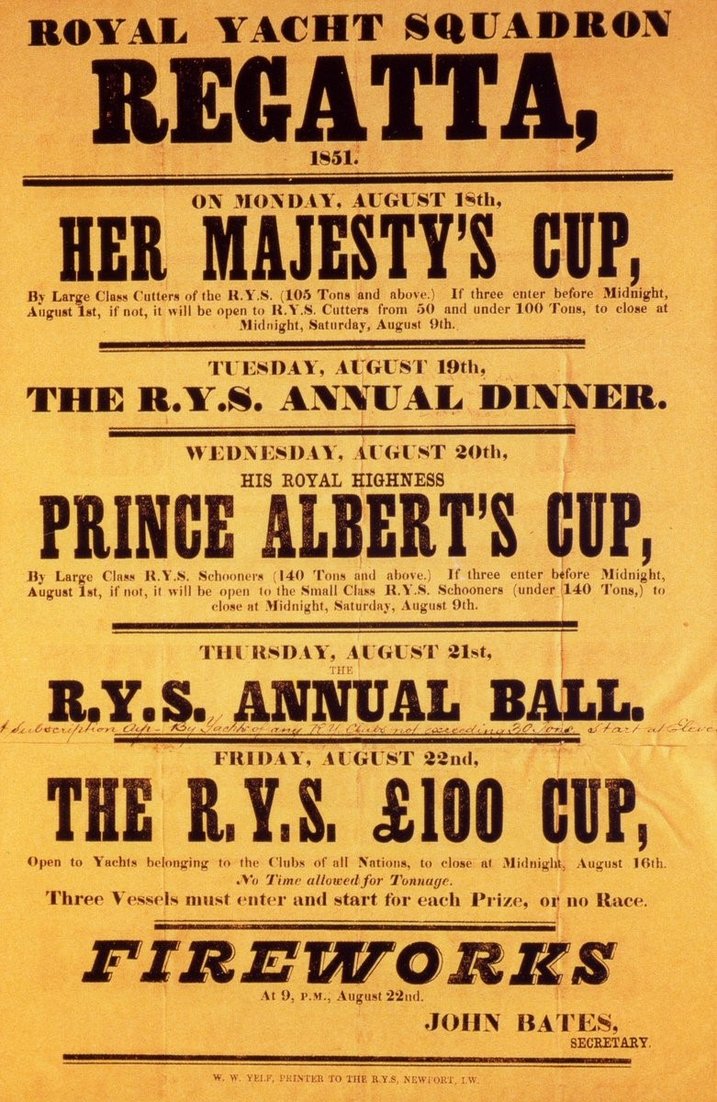
The first challenge against America came from British railway tycoon James Lloyd Ashbury in 1870, after his Topsail Schooner Cambria beat Americas ‘Sappho’ in a race on the Solent in 1968. Ashbury’s confidence was to no avail, as Cambria finished 10 th in the 17-boat fleet.
Canada was the next to try and win away the trophy, they challenged twice but fell short of the mark on both attempts. Canadas second attempt was a disaster, the Canadian challenger ‘Atalanta’, representing the Bay of Quinte Yacht Club, was entered into the race despite being unfinished due to lack of funding. Such a spectacularly bad performance paved the way for the NYYC to change the deed of gift to accommodate new rules.
Deed of Gift - 1857 The Deed of Gift was a letter written to the secretary of the NYYC to formalize the rules that would govern the future of the Americas Cup. The deed of Gift originally stated that any foreign yacht club could challenge the current holder of the trophy, that the race would be held on the waters of the current holder, and that any challenger was to sail to the race destination on their own hull, so the boats could not be disassembled and rebuilt at the destination.
The deed of gift has been changed many times since the first race, rules such as the NYYC Rule (1885-87) , put in place after Canadas failure, the rules were changed so that any challenger should belong to a yacht club based on an arm of the sea, which excluded any yacht clubs situated on the great lakes, and that any challenger accepted should sail to the venue on her own hull. They also imposed penalties on any challenger with a waterline longer than 85ft (25.91 m).
The Seawanhaka Rule (1889–1903) saw the waterline limit reduced to 70ft in 1889, although in the coming years this would increase to 85ft, and then 90ft. This rule led legendary yacht designer Nathanael Herreshoff to bend the rules by designing ‘Reliance’ the largest racing sloop ever built, described by some as a ‘racing freak’ due to her long overhangs, which ultimately increased her
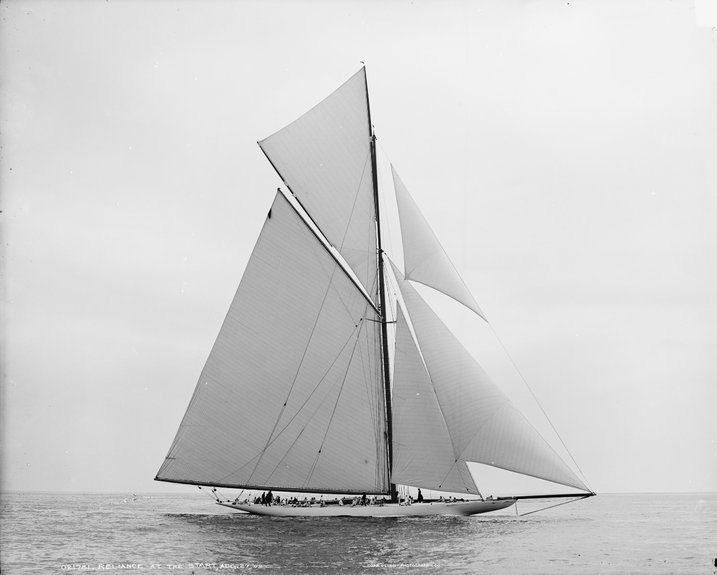
The Universal Rule (1914–1937) was introduced by Herreshoff, this rule determined that only J-Class yachts were eligible to race in the Americas Cup, single mast yachts between 65-76ft in length.
The Twelve-Metre Rule (1956–1987) was brought in after 21 years without a challenger, post-war economic realities meant that it was too expensive to build, maintain, and crew much larger vessels, so the 12-metre rule made way for smaller and more affordable boats.
In 1983, the Royal Sydney Yacht Squadron collaborated with Paul Madden of the NYYC to bring into play ‘The Challengers Cup’. Louis Vuitton was then contracted to be the sponsor of this cup, thus creating ‘The Louis Vuitton Cup’. This was to be the ‘decider’ race whose winner would go on to challenge the current holder of the Americas cup.
The New York Yacht Club held the trophy for an incredible 132 years, until they were challenged, and beaten by Australia in 1983 with a 63ft racing Yacht named ‘Australia II’. The nail-biting finale saw Australia II beat Americas defender ‘Liberty’ to the finish line breaking a 3-3 tie to win 4-3 on the 7 th race. Australia’s secret weapon was a winged keel that they kept hidden from the competition under a ‘modesty skirt’ that was draped from the deck when the boat was being hauled from the water.
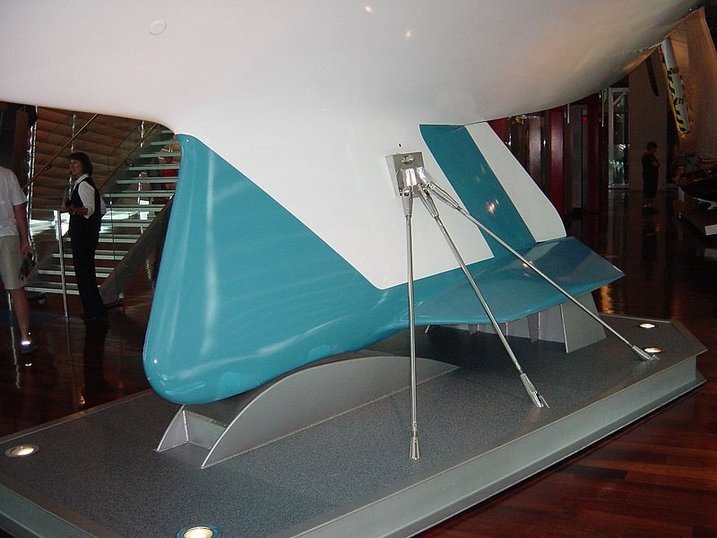
In 1987, the Americas cup was defended for the first time in the waters of Australia, off the coast of Fremantle, WA. Dennis Conner of the San Diego Yacht Club won the trophy back for the USA with his 12-metre challenge boat ‘Stars & Stripes 87’.
Soon after Conner had won back the Americas cup, New Zealander Sir Michael Fay of Mercury Bay Boating Club, surprised Conner by challenging with an enormous 90ft waterline yacht named ‘New Zealand (KZ1)’ or the ‘Big Boat’. Since the SDYC wanted to continue to race under the 12-metre rule, they contested this decision and took Fay to court, which ultimately saw the ‘Big Boat’ deemed eligible to race. With limited time to prepare for the race, the SDYC decided that a Catamaran was their best bet. With its lower mass and wing sail, the Catamaran, named after the last American winning boat ‘Stars & Stripes’, easily took the lead and America were declared the winners yet again.
Though this was not taken well by Fay, who considered the race unfair and thus took Conner back to court, winning the case and thus New Zealand were declared the winners by default. This decision was appealed and subsequently overturned and SDYC were once again declared to have successfully defended the cup, in what was described as the most controversial match since the cups inception.
After the controversy of the 1988 match, the International American Cup Class (IACC) Rule (1992-2007) came into play. The IACC yachts were to be designed to the same formula, but non-identical, so still giving the designers some free reign. The yachts were designed to be slightly longer than the 12-metre class but much lighter. The IACC yacht specs would be:
- LOA - 75’0”
- LWL - 57’0”
- Bea - 18’0”
- Draft - 13’0”
- Mast Height - 108’0”
- (Main & jib) - 3,000 2 ft
- (Spinnaker) - 4,500 2 ft
In 1995, New Zealand took the cup in ‘NZL 32’, nicknamed "Black Magic" due to her jet-black hull. She challenged Dennis Conner’s defender yacht ‘Young America’ and sailed into an easy win beating Young America 5-0, making the 1995 Americas Cup New Zealand’s first official win.
On March 14 th 1996 tragedy struck when Maori activist, Benjamin Peri Nathan, slipped past the security at Royal New Zealand Yacht Squadron's clubroom and attacked the Americas Cup trophy with a sledgehammer. He was subsequently convicted and jailed for 34 months. The cup was so badly damaged that it was feared to be irreparable. The New Zealand team who won the trophy reportedly tried to make light of the situation claiming "We heard we are going to be racing for the America's Plate now." The original manufacturers of the cup, Garrards Silversmiths of London, spent 3 months slowly and carefully restoring the cup to its former glory.
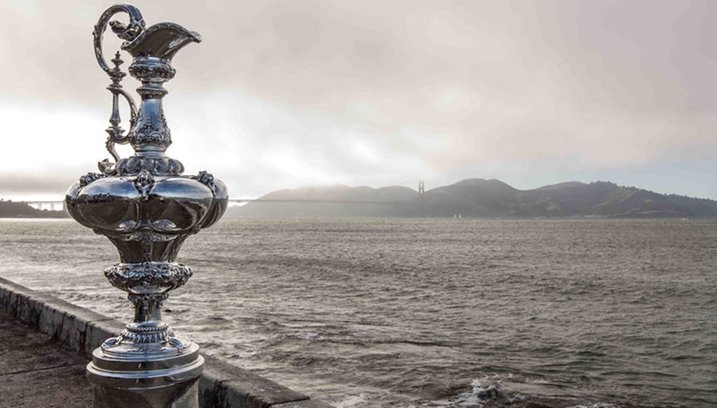
New Zealand went on to successfully defend the cup from the Italian challenger ‘Prada Challenge’ (AKA Luna Rossa) in 2000, this was the first Americas cup without an American challenger or defender.
Whilst holders of the cup, Team New Zealand went on to change the rules further, in 2003 they removed the rule that stated that all crew members be of the challenging teams nationality.
The Swiss team Société Nautique de Genève (SNG), took full advantage of this change and went on to hire some of the best and most experienced Americas Cup Sailors for their team ‘Alinghi’. This included many of the members of Team New Zealand, alongside sailors from countries such as the USA, Canada, the UK, Germany, Australia and South Africa to name a few.
Team Alinghi sailed to victory, winning 5-0 against New Zealand in the 2003 Americas Cup, this was a historical moment as it saw the Americas Cup trophy returned to Europe for the first time in 152 years.
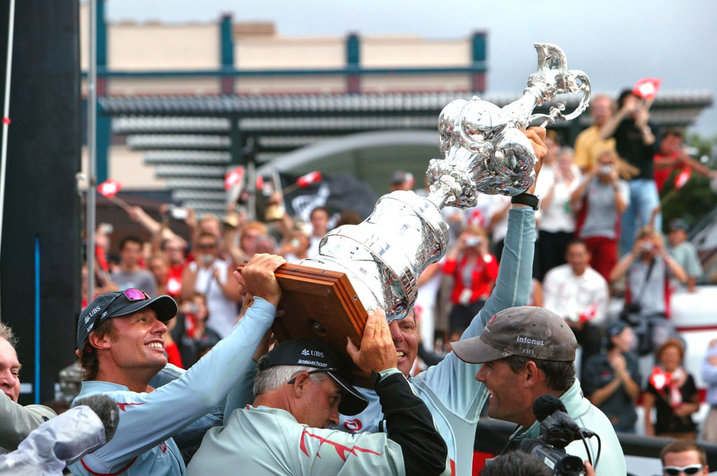
2007 saw Société Nautique de Genève amend the rules even further, leaving ‘constructed in country’ the only original rule concerning nationality. The 2007 Americas cup was held in Valencia, Spain, due to Switzerland not bordering an arm of the sea or the sea itself, this was the first time in the history of the Americas Cup that the race had been held in Europe, and also in a country other than the defenders own. Switzerland’s team Alinghi successfully defended the cup winning the match 5-2 against New Zealand challengers the ‘Royal New Zealand Yacht Squadron’.
After their win against team Alinghi, SNG accepted a challenge from Club Náutico Español de Vela (CNEV). After the protocol between the two yacht clubs was signed and made public, American club ‘Golden Gate Yacht Club’ (GGYC) filed their own challenge and also filed a court case claiming that CNEV were unqualified under the rules of the Deed of Gift and that they should be disqualified and GGYCs team ‘Oracle’ be named the official challenger. The court case filed by GGYC questioned the credentials of CNEV for reasons such as the fact that CNEV hadn't run an annual regatta on an open water course on the sea, or an arm of the sea, as required by the America's Cup's deed of gift. CNEV fought back but ultimately lost their case and GGYC were named the rightful challengers.
The match was set as a one-on-one, best-of-three race, Alinghi were unsuccessful in their defence and team ‘Oracle’ won 2-0 with their 113ft (LOA) trimaran ‘USA 17’.
2010 saw Italian yacht club Club Nautico di Roma (CNR) file a challenge against the current Americas Cup holders GGYC. The match was scheduled for 2013 and the protocol announced the AC72 class, an 86ft wing sail foiling catamaran, to be the competing boat style.
Also introduced were the AC45 class boats, 44ft one-design wing sail foiling catamarans that were based on a smaller scale version of the AC72s. These are known as the ‘training’ or ‘practice boats’ that were used in the America's Cup World Series, the pre-trials to determine the official challenger. in May 2011, CNR withdrew from the competition due to financial struggles, following this decision the second team to file a challenge, the ‘Royal Swedish Yacht Club’ (RSYC) took their place.
The Royal New Zealand Yacht Club won their way to the challenger position by easily beating its swiss opponents RSYC in the Louis Vuitton cup and looked well on the way to taking the Americas Cup home once again.
For the cup match, USAs Team Oracle recruited England’s own Sir Ben Ainslie as their tactician. The match was decided to be a first-to-nine race, with the winners being the first team to score nine points, one point being awarded for each race won.
USAs team Oracle trailed behind New Zealand, at one point being only one point from failure as NZ lead 8-1, but Oracle came back from the brink with a phenomenal display, winning 8 straight races and sailing to victory with a 9-8 score.
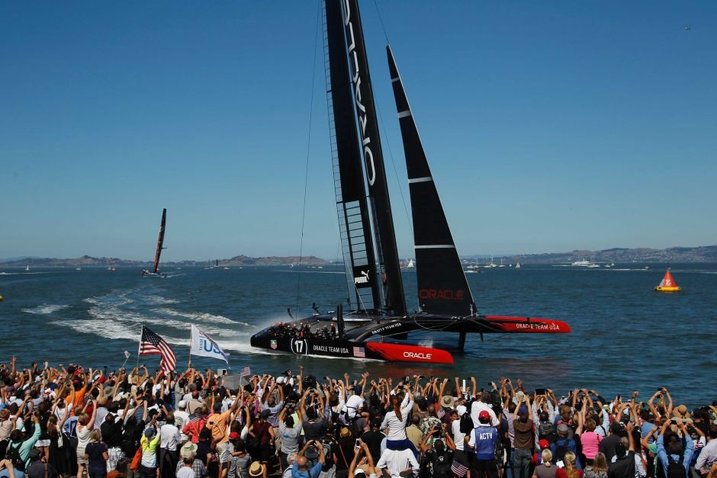
The Teams for the 35th America's Cup
In May 2017, the 35 th Americas Cup will begin in Bermuda. The racing will start on 26 th May with the Louis Vuitton Americas Cup Qualifiers.
5 teams will compete against the defender Oracle Team USA for the challenger position, the teams are:
- BMW Oracle Racing - USA (Defender & Current Cup Holder)
- Land Rover BAR - UK
- Emirates Team - New Zealand
- Softbank Team - Japan
- Groupama Team - France
- Artemis Racing - Sweden
All 6 teams will compete in 2 Round Robin between May 26 th and June 3 rd and the top 4 will advance to a best-of-9 semi-finals between June 6 th -8 th .
The winner of the semi-final will take the title of official challenger and race Team Oracle for the 2017 Americas Cup.
The Americas Cup final will be a best-of-13 race held between June 17 th -27 th 2017 .
The 35 th Americas Cup will be held in the beautiful blue waters of Bermuda.
Share this article
You might like.

Sign up to our newsletter
By submitting this form, you agree to our Privacy & Cookie Policy
Change units of measure
This feature requires cookies to be enabled on your browser.
Show price in:
Show lengths, beam and draft in:
Show displacement or weight in:
Show capacity or volume in:
Show speed in:
Show distance in:

The price of having a passion for powerboat racing
The cost is high and return on investment negligible, but for boaters like steve kildahl the rush of racing is worth it.
![yacht racing prize money Steve Kildahl has competed in all of the Sarasota Powerboat Grand Prix races. [Herald-Tribune archive / Dan Wagner]](https://www.heraldtribune.com/gcdn/authoring/2019/07/04/NSHT/ghows-LK-8cdc2f6a-6d35-3750-e053-0100007f4375-424cff1e.jpeg?width=660&height=472&fit=crop&format=pjpg&auto=webp)
The boats are huge — some teams need two trucks to pull them back into the streets of Sarasota.
The speeds are intense — some can top 185 miles per hour.
And the price tag? That is the heaviest part.
Last year, Scott Colton, team manager for Miss GEICO Racing, said that putting a top class boat on the water could cost a team upwards of $1.5 million.
But what’s the cost for your average Joe? What if you just want to get in the race without putting in hundreds of thousands of dollars?
Steve Kildahl has raced in every single Sarasota Powerboat Grand Prix. This will be his 35th race and his 13th with his son, Stephen, who drives his boat while he controls the throttle. He safely knows his way around a powerboat, but he doesn’t race in the fastest, biggest or most expensive boats.
Kildahl’s team, Scott Free Racing, will compete in the Super Vee Extreme class this year. The registration fee for his class is $1,000 and the top prize is only $3,000.
“You don’t do it for the money, you do it for the love of the sport,” Kildahl said, laughing. He said that some of the higher classes don’t even provide prize money for a lot of races to try and reduce costs, even with registration fees approaching $2,000.
Because of this, a lot of teams seek sponsors to keep them in the race, but sponsors still don’t always have provide enough money for boaters to turn a profit on racing. Kildahl’s team’s biggest sponsor is boatfloater.com, but the team is sponsored by a variety of companies.
He said that some big teams might be able to make an income from racing, but most will struggle if profit is their goal. Most boat racers do it as a hobby first, and sponsors cover expenses like travel and maintenance.
The Scott Free boat, along with most boats in its class, cost Kildahl about $90,000. The motor alone is about $25,000 to $35,000, and most teams keep spare motors.
Super Vee Extreme boats don’t have any speed limit. They have a canopy cockpit and a single engine with a length limit of 32 feet. SVX boats are the fastest single engine boat class and sport a V-shaped bottom.
Every boat has a driver, a throttleman and a crew, including a designated crew leader. Everyone has to be registered with the race’s organization — in this case, both the Offshore Powerboat Association and the American Power Boat Association.
Registration for these sorts of organizations can cost anywhere from $3,500 to $,6000, with the price increasing for teams with more members. Some teams also pay their crew members, but Kildahl only has family members on his boat.
Most boats in the SVX class are used, so secondhand boats can be acquired for somewhere between $55,000 and $75,000, depending on the boat and whether or not you’re looking for the full package or just the chassis.
Boat trailers cost between $10,000 and $12,000, with a truck to pull it. Kildahl uses a Ford F-250 to pull his boat, which starts at about $33,000 new. He uses the model’s standard tow rig. Maintaining that truck can add on a few thousand dollars more over time.
Surprisingly, fuel isn’t a huge issue for powerboats in the SVX class. Kildahl’s boat uses regular fuel and his tank is only about 35 gallons, so it will likely cost him around $88 to fuel up for a race.
Kildahl also estimates that he spends around $4,000 to $5,000 in miscellaneous spare parts. He always anticipates more spending because things go wrong during races. Drives, for example, break often and repairing them can cost a team somewhere in the range of $5,500 to $6,000.
Locals like Kildahl get the luxury of avoiding hotel and travel costs, which can quickly run teams an extra $10,000, but these costs are often covered by sponsors.
In total, $170,000 is Kildahl’s final price — just under the annual salary of the average pediatrician, psychiatrist or CEO.
But what does it cost for your most basic powerboat racer to get into the industry?
Kildahl thinks that most people racing in a lower class will have an initial investment of around $20,000, including getting a boat and getting it ready to race.
Extra costs like registration, race fees, maintenance and crew costs can push that number closer to $30,000. The potential cost of necessary repairs is always there, too, so having an extra few thousand dollars on hand for racing isn’t a bad idea.
Class 7 boats, the lowest class, can’t go more than 60 miles per hour and have to be 20 to 22 feet in length. They have an open cockpit unlike the canopy of the higher classes.
The cost may be high and the return on investment may be negligible, but for boaters like Kildahl, the rush of skipping over the water and the reward of figuring out a winning formula comes from a place of passion.
Kildahl and his son will be back on the water around 2 p.m. Sunday for the Super Vee Extreme.
COST TO RACE A SUPER VEE EXTREME POWERBOAT Motor (and spare motor) — $50,000 Registration — $3,500 Trailer — $10,000 Truck (Ford 250) — $33,000 Fuel — $88 Propellers — $1,500 Drives — $5,500 Spare parts — $4,000 Boat (used) — $55,000 Total — $162,588
Solo Challenge
Global Solo Challenge – Home
Achieving the dream.
Around the world Single-handed Non-stop By the three great capes With a unique format Budget friendly Environmentally conscious Second edition 2027-2028
Latest updates
After analysis of the 2023-2024 edition of the Global Solo Challenge, and collection of feedback from skippers, the Notice of Event for the 2027-2028 edition has now been updated and published. The Regulations have also been reviewed and updated with updates that reflect the experience gained during the first edition. Skippers interested in participating are encouraged to enquire and can join our dediccated WhatsApp group. Entries are now formally open and details of those who have already submitted their application will be published in the coming weeks. 5 skippers are formally enterered out of a continuously growing list of equirers that now accounts for just over 80 skippers. Useful Links: Notice of Event 2027-2028: https://globalsolochallenge.com/notice-of-event-2027/ Regulations: https://globalsolochallenge.com/regulations/ Enquiries: https://globalsolochallenge.com/initial-enquiry/ Boats for Sale: https://globalsolochallenge.com/boats-for-sale/
Louis Robein has reached another important psychological milestone, he has less than 5000 nautical miles to go, which represent 20% of the total course. He is sailing by Rio de Janeiro in Brazil and temperatures are finally mild, the route is still long but soon Louis will be back in the northern hemisphere as he makes his way to the equator. Since repairing his autopilot he has been able to sail at much better average speeds and he is currently expected to finish sometime around the end of june or beginning of July. To early to tell. Bon courage Louis, we are rooting for you.
As anticipated in our newsletter yesterday, Louis Robein was expecting one last significant south Atlantic low pressure system before reaching the calmer conditions of the trade winds. The centre of the low pressure is south of the French skipper and moving quickly to the east. Louis is enjoying strong following winds pushing him north. With 5500 miles to go he is now north of the latitude of Buenos Aires and the cold weather of the great south will soon become a distant memory.
The construction of the custom cradle that will sit on top of a 20ft open top container is complete and has been transferred to the port where it will be assembled and Ari’s boat will be loaded tomorrow in Durban, South Africa, onto the ship “MACS Green Mountain” and is due to be offloaded in Hambourg, Baltic Sea, on June 13th. Shipping a boat via cargo is easier said than done, racing boats need to sit on appropriate cradles or the risk of damage to the hull is too significant. Cradles with adjustable legs commonly found in boatyards are not suitable and Ari opted to build saddles that could accommodate the boat, built on top of a 20ft container which is easily handled by port cranes. The saddles are shaped to distribute the weight of the boat evenly. Last month Ari launched a fundraiser asking for help to front the many expenses he is incurring to build the cradle in Durban and for the cost of the shipment and wished to thank all those that helped him to get this far. Bringing the boat back to Europe is a significant milestone as this will mean not all has been lost.
Louis Robein resumed racing a week ago after leaving Ushuaia where he had stopped for repairs. It is cold in the south Atlantic which does not have a current circulation like that of the north Atlantic which is considerably warmer at comparable latitudes thanks to the Gulf current. Louis has already had to face strong winds east of the Falklands and has another thousand miles to gain to the north before he will be out of the influence of southern weather systems. Another low pressure is developing off the coast of Argentina and will impact Louis in from tomorrow. It seems however that he is deliberately sailing on an easterly course to avoid the worst of the system before heading north on the back of the low in following winds. His latest blog tells us of more trials and tribulations which however seem manageable for our resilient skipper. Bon courage Louis.
After just over two weeks, Louis Robein has left Ushuaia to continue his incredible circumnavigation. He began motoring in no winds yesterday to reach the point where he stopped racing and headed for his stopover for repairs. After starting his engine on April 6th, fatigued, in a dark moonless night, a navigational error saw him run aground in the bay of Aguirre and forcing him to seek assistance and receive a very expensive tow. He was not racing at the time and therefore external assistance did not disqualify him. In fact, the unfortunate incident gave rise to an amazing wave of support for Louis with a crowdfunding campaign launched by his friends. The boat was inspected by divers and did not sustain any damage. The rules would require an inspection ashore, as this proved to be a problem to arrange, Louis was forced to seek dispensation. The rules do not have a deadline for departing when pulling into port after Cape Horn so he was only warned about the risks of sailing in the South Atlantic in autumn. Louis had to formally confirm he understands and accepts full responsibility for these additional risks. Aside from the rules, everyone following the
Today, April 21st, at 2:03 pm local time, after 175 days, David Linger an Koloa Maoli crossed the finish line of the Global Solo Challenge taking 6th place. It is an outstanding achievement for David who was certainly be pleased to have arrived. The magnitude of his achievement will take time to sink in and right now he can celebrate with his girlfriend Lillian, his siblings and friends. Visibly thinner than when he left, he has a rather rough last week at sea with lots of upwind sailing and boat slamming. Today arrival though was in nice conditions and a beautiful sunshine. Well done David!
David has been wisely sailing on the edge of the Finisterre wind acceleration trying to keep out of the strongest winds and avoiding an excessively brutal windward bashing to the finish line. He has 86 miles to go, all upwind unfortunately, with stronger winds forecast for tomorrow. David should however be able to finish in less than 24 hours and is expected in A Coruna tomorrow, April 21st morning, around 9-10 am local time, although we can try to forecast a more precise time as he comes closer. David must be certainly looking forward to his arrival, the weather is gorgeous, hot and sunny without a cloud in sight. A nice change from the winter weather arrivals in february/march. As usual we will be broadcasting live the arrival on our social media channels so be sure to tune in. The tracker has switched to hourly updates and the frequency will increase to 15′ and eventually 5′ minutes on his last 10 miles or so.
News Articles
The route to the Global Solo Challenge 2027-2028
Cole Brauer, Philippe Delamare @globalsolochallenge Louis Robein, the last competitor still at sea in the Global Solo Challenge 2023-2024, has reached the latitude of Rio De Janeiro but most
One more storm, two more oceans for the Global Solo Challenge 2023-2024
Cole Brauer @colebraueroceanracing Louis Robein is the last competitor in the Global Solo Challenge 2023-2024 who is still at sea, we have all followed his resilience and determination as
Global Solo Challenge achieves sustainability and environmental awareness goals
TÜV Thüringen congratulates the organization and participants for their achievements in the Global Solo Challenge. In July 2023, The Global Solo Challenge (GSC) announced that it had achieved ISO 20121:2012
David Linger takes 6th place in the GSC, Louis Robein resumes his voyage
David Linger – Koloa Maoli @globalsolochallenge Sunday April 21st, at 2:03 pm local time, after 175 days, David Linger crossed the finish line of the Global Solo Challenge taking
Skippers' Blogs
05/16/2024 The night was warmer with the water at 31° which also warms the interior of the boat, I took off my sweater. This morning,
Broken Hydro Propeller
Hello, 15/05/2024 Still an endless rain, the water is warming up: 29° but not the air: 23° which remains humid and the inside of the
Oil platforms
4 days of navigation and maneuvers without DIY, the time was well spent. 12/05/2024 10:30 am: All morning, calm and rain: wind speed 2.8, surface
The great south becomes a memory
The great south becomes a memory, but the conditions remain challenging. With no wind, little wind, or strong wind, it will take all the talent
Global Solo Challenge Copyright © 2022. All rights reserved. Website created by Primeconsulting
The Event, its name, logo, website, social media pages and all their content are the sole property of Marco Nannini LTD, 3rd floor, 166 College Road, Harrow, Middlesex, HA1 1BH, UK. All rights, title, intellectual property, Copyright, contractual and other entitlements of and relating to the Event, its name, logo, website, social media pages and all their content, vest in and are retained by Marco Nannini LTD.

- CLASSIFIEDS
- NEWSLETTERS
- SUBMIT NEWS

Discover the Top 20 finalists in the Mirabaud Yacht Racing Image award 2023
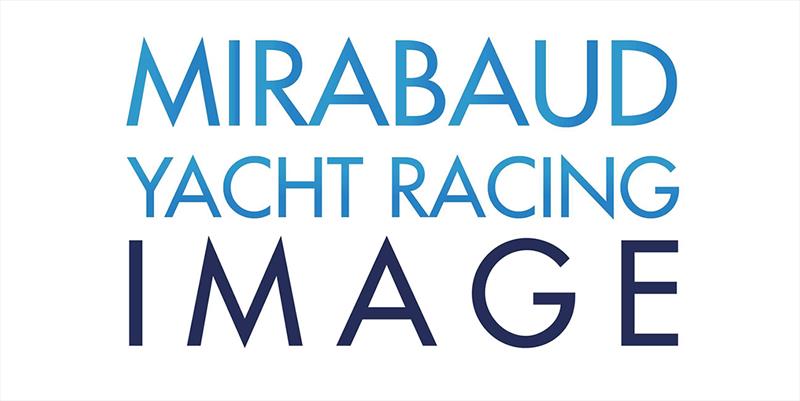

Related Articles
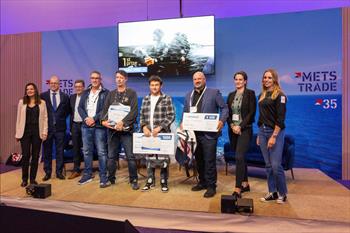
- BOAT OF THE YEAR
- Newsletters
- Sailboat Reviews
- Boating Safety
- Sailing Totem
- Charter Resources
- Destinations
- Galley Recipes
- Living Aboard
- Sails and Rigging
- Maintenance

$6.4 Million in Prizes in World’s Richest Ocean Race
- By John Roberson
- Updated: April 10, 2002
Royal Perth Yacht Club burst back onto the international sailing scene with the launch of a spectacular and innovative new ocean race, starting and finishing in Fremantle. With a total prize purse of US $6.4 million, the race will pass the three notorious Capes, Leeuwin, Horn and Good Hope, to port, and take about 45 days, from a start in December 2004.
This will be a non-stop blast around the infamous Southern Ocean, sailed in identical 25-meter boats, with the winner taking US $2.5 million, and a “skins” type format making it possible for one boat to collect up to US $4.65 million The organizers of the “Antarctica Cup” race will supply the boats, which are to be designed by Ron Holland, and built in Western Australia, with the entry fee for the event including the purchase price of the boat.
Americas Cup winning sailor, and lifetime Fremantle resident, John Longley said about this new project, which is scheduled to happen every two years, “It is not often that a great idea corresponds with a great need. I am sure that everyone interested in long distance, blue-water ocean racing will be captivated by the potential of this great race.”
Although this is a nonstop ocean race, there will be 11 legs, each one starting and finishing with the fleet passing through a gate, either created with electronic waypoints, or a physical gate like Cook Strait, between North and South Islands, New Zealand. Each leg will have prize money of US $100,000 for the fastest boat, which will not necessarily be the leading boat, and there will also be points scored, so there will be a points winner as well as a first across the finishing line winner. The gates which divide the race into legs, are also an important safety feature, because they will prevent the fleet from straying too far south into dangerous iceberg territory.
This race will be open to yacht clubs around the world, which will represent their countries, boats will have to be skippered and crewed by nationals of the country they represent, making this very much a “nations cup” of blue-water ocean racing.
The driving force behind this daring new concept is Bob Williams, the former owner of the champion Australian basketball team, the Perth Wildcats and one of Western Australias most successful ocean racers in the 80s with a pocket maxi called Freight Train. He has gathered around him a team of international sailor, including John Longley and Sir James Hardy, who will be patron of the race, to develop the concept.
Williams commented, “Fremantle is a place where every sailor in the world dreams of sailing, and now we are able to give the worlds best sailors an opportunity to come back here and be a part of a totally new concept in ocean racing.”
Talking about the boats he is designing for this unique race, Ron Holland said: “My aim has been to create a new design for this great race, that presents an exciting high performance platform, yet acknowledges the desirability of greater safety margins than would have been possible to achieve outside the one design concept.”
The course will take the boats south from Fremantle to Cape Leeuwin, where they will turn left, and head across the Great Australian Bight, passing Cape Horn–which is almost exactly halfway–then on to the Cape of Good Hope, before finishing back in Fremantle.
In recognition of the history of exploration in the southern hemisphere, each of the legs is named after a famous ship of boat connected with this part of the planet, including Endeavour and Cutty Sark, while the gates that separate the legs will be named after sailors or explorers like Scott and Tabarly
For further details contact Royal Perth Yacht Club at +61 8 9389 1754, or visit our website at www.antarticacup.com
- More: DIY Sailboat Projects
- More How To
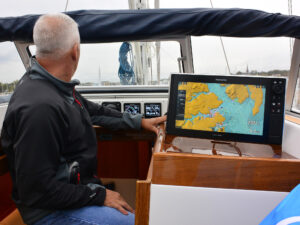
Adding Onboard Electronics? Here’s How To Get Started
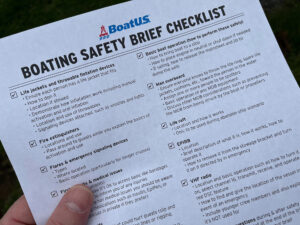
7 Boating Safety Tips for Summer Cruising
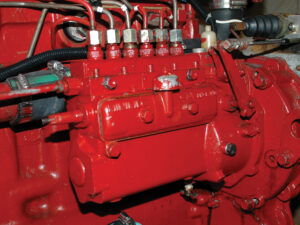
How to Prep for a Diesel You Can Depend On
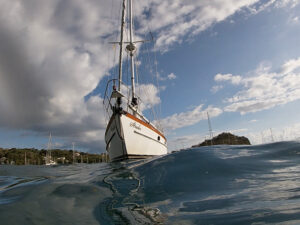
Anchoring in Paradise
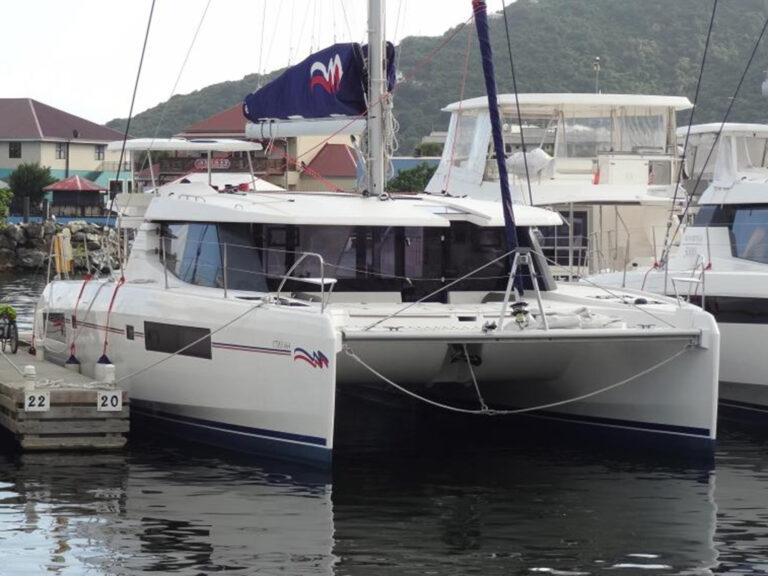
Now For Sale: Leopard 45
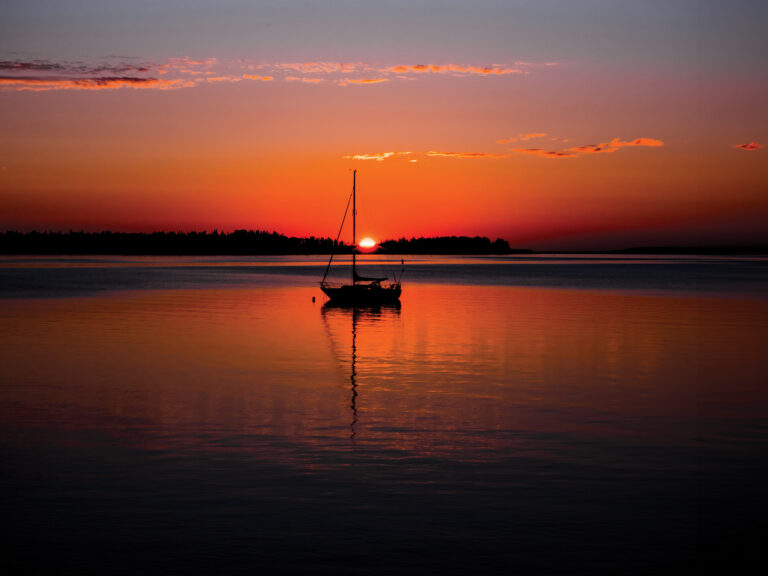
The Long Way Around

Sailing to the Land of Shrimp

Swallow Tattoos and Sailors
- Digital Edition
- Customer Service
- Privacy Policy
- Email Newsletters
- Cruising World
- Sailing World
- Salt Water Sportsman
- Sport Fishing
- Wakeboarding
Sydney to Hobart yacht race 2023 — how to watch and what to look out for
The sight of big yachts tearing around Sydney Harbour's blue water with crews scrambling over the deck at the start of the annual Sydney to Hobart race, can be thrilling, if somewhat confusing, watching.
Where is the start line? Are those boats going to crash into each other? What happens if someone falls off?
Do crew members get any sleep during the race? What prizes are they racing for? What do you mean the first over the finish line is not considered the top prize?
Wait, what ... there is a boat called Imalizard?
So many questions!
Let's try and answer them.
Where do they start?
This year, the 78th running of the Sydney to Hobart, has a fleet of over 100 boats ranging from supermaxis (typically boats over 21 metres) to smaller yachts.
There are two starting 'lines' with the larger yachts on the northern line just north of Shark Island, and the smaller boats on the southern line.
Two rounding marks off Sydney Heads compensate for the distance between the lines, before the fleet heads to sea on the ocean voyage to Hobart, 628 nautical miles (1,163 kilometres) away.
When does it begin?
It's already started!
At 1pm AEDT on Boxing Day (December 26) the ceremonial cannon was fired, marking the start of the race.
How can I watch it?
Race sponsor Rolex says the start will be broadcast live on the Seven Network throughout Australia and live and on demand on the 7Plus app.
Internationally, the race will be available through YouTube on the CYCATV channel or via Rolex Sydney Hobart's Facebook page.
If you are in Sydney and on the water, spectators who wish to watch the start but not follow the fleet are advised to stick to the "western side of the harbour".
Good vantage points for spectator boats include "Taylors Bay, Chowder Bay, Obelisk Bay and North Head on the west and Rose Bay, Watsons Bay, Camp Cove and South Head to the east".
According to organisers, the harbour will be "very crowded and traffic can be chaotic, so stay alert, follow the advice of race officials and remember to keep well clear of the exclusion zone between 12pm and 2pm".
Will there actually be some near misses?
The start is when things can get feisty, with crews trying to get their yachts into the best position before the cannon shot and on the run to get around Sydney Heads and out into the South Pacific Ocean.
This is when near misses and actual collisions can happen, with spicy language occasionally making it onto the live television broadcast thanks to cameras on the boats.
Members of the public watching from boats are told to stay in a "zone" away from race competitors, but that can still make for more potential near misses as the competitor boats weave across the water trying to find their best way into the start line at just the right time.
All in all it can look like chaos and often results in protests being lodged by crews who allege other teams of a wide range of infringements of race rules, across the entire course all the way to the finish.
Sometimes, if protested against, boats can perform "penalty turns" while at sea as punishment. Both Wild Oats XI and Comanche performed penalty turns last year following a scrape in Sydney Harbour.
Decision to make — follow the coast or head out to sea
Once out of the harbour, the fleet then begins to make its way down the east coast of Australia, and are faced with a decision — to either stay close to the coast or to go further into open water where the East Australia Current can carry them. The amount of wind dictates this decision.
After navigating the NSW South Coast, it is then into Bass Strait, where the worst conditions are generally found, with strong winds and big waves.
Simply surviving is the key here. Equipment failure and breakage ends many a team's race during this stretch.
With Bass Strait successfully navigated, another choice needs to be made — sail close to the coast of Tasmania where they will find better water — or further out where winds are heavier.
Whichever the way, soon boats will be rounding "Tasman Light" and crossing Storm Bay. Then, they'll pass the Iron Pot at the mouth of the River Derwent .
After a crawl up the often windless Derwent, boats will cross the finish line at Castray Esplanade before eventually settling in Hobart's Constitution Dock.
What are they racing for?
There is no prize money for the winners.
Instead, crews race for trophies in a number of categories , the main events for casual observers being Line Honours (first across the line) and Overall (winner decided based on handicap).
The first yacht across the line wins the JH Illingworth Challenge Cup, while the Overall winner on handicap wins the Tattersalls Cup.
The Overall winner is considered a truer indication of sailing skill . The boats are smaller and lighter and therefore not as naturally fast. Getting them to Hobart is tougher. Handicaps (time adjustments) are calculated by a range of factors such as the weight and length of the boat.
Most of the time, Overall honours are won by a smaller, slower boat, which outdoes its larger opposition when time is adjusted for size and other factors.
The reigning Line Honours victor is Andoo Comanche, which won in a time of 1 day, 11 hours, and 15 minutes, the boat's 4th line honours victory.
The reigning Overall winner is Celestial, which finished 2022's race in 2 days, 16 hours, and 15 minutes.
In 2017, LDV Comanche set a new line honours record, finishing first in 1 day, 9 hours, 15 minutes and 24 seconds, beating Perpetual Loyal's record of 1 day, 13 hours, 31 minutes and 20 seconds, set the previous year.
Who can race?
The minimum age to compete in the race is 18 years of age. There is no upper age limit.
Each yacht generally carries between six and 24 crew members, the average across the fleet being 10 to 11.
The head of the crew is the skipper and often the skipper also owns the yacht. Other positions on board include the "helmsperson, navigator, tactician, trimmers and foredeck person, or for'ard hand", race organisers explain.
Two-hander boats (a category introduced in 2020) attempt the voyage with only two crew members.
After the 1998 race, in which six sailors died, five yachts sank, more than 60 yachts retired and 55 sailors had to be rescued by helicopter, at least 50 per cent of crew members in a team have to have completed a sea safety survival course.
All competitors must have completed an approved "Category 1" equivalent passage. One advertised course for Sydney to Hobart wannabe sailors offers five days of "continuously sailing" across a 500 nautical mile passage off the New South Wales coast, starting at $1,795 per person.
Conditions on board can be cramped and extreme, with very rough seas often battering yachts along the way. If a crew member goes over the side, that means teams have to circle back to collect them.
Winner of the 2022 Two-Handed Division Rupert Henry said for his two-person team, "we only manage around four hours max of sleep each".
"We know when each other needs to crash so we do it then."
As for people who easily get sea sick, perhaps this is not the hobby for you.
How can I follow the boats online?
You can follow the race on an online tracker , which shows the positions of yachts as they move south, via a GPS device on each vessel.
As the race goes on, you can see the course charted by crews — unless of course the boat's GPS device gets switched off, rendering it invisible to spectators and other competitors — an accusation that was levelled at Wild Oats XI in 2018 by the owner of Black Jack.
Yachts can also be tracked on the Marine Traffic website .
Imalizard, Eye Candy and Millennium Falcon — what's in a name?
If you are the kind who chooses a favourite yacht based on the name, there are some good ones this year, including Imalizard, Disko Trooper, Millennium Falcon, Lenny, Mister Lucky, Pacman, Toecutter, Extasea, two yachts with Yeah Baby in their names, Chutzpah, Ciao Bella and Eye Candy.
Not among 2023's starters is Huntress, which came to grief last year after breaking a rudder, with the crew abandoning the vessel and it later drifting and washing up on a remote Tasmanian beach , leading to a dispute over the salvage rights .
Main contenders for the Overall title are Alive (2018 winner, a Tasmanian boat), Chutzpah, Celestial, Smuggler and URM, as well as supermaxis LawConnect, SHK Scallywag, Andoo Comanche and Wild Thing.
Barring disaster, the Line Honours winner will almost certainly be one of the four supermaxis.
This yacht has raced under several names, previously racing as Perpetual LOYAL, Investec LOYAL and InfoTrack.
In 2016, Perpetual LOYAL became the fastest-ever boat to complete the race, setting a new race record of 1 day, 13 hours, 31 minutes, and 12 seconds. That record has since been broken by LDV Comanche in 2017. Investec LOYAL also sailed to victory in 2011.
Previous owner Anthony Bell declared after his 2016 victory that he would be selling the boat. It was picked up by tech entrepreneur Christian Beck, with the boat's name changed to InfoTrack.
Now called LawConnect, conditions haven't suited the heavier yacht in recent years. It is yet to win a Sydney to Hobart under its new name and ownership but is always among the leaders' pack. It recently defeated Comanche in the Big Boat Challenge, a traditional lead-up event to the Sydney to Hobart Yacht Race.
Andoo Comanche
John Winning Junior took over from Jim Cooney as skipper of the newly named 'Andoo' Comanche last year, and had instant success, beating its rivals to a 4th Line Honours victory. In 2017, it defeated Wild Oats for Line Honours, setting a race record in the process, but only after a controversial protest. It also claimed Line Honours in 2019.
Andoo Comanche will enter as hot favourite for Line Honours this year after installing a brand new million-dollar sails package and winning the Cabbage Tree Island race – it did however finish second to LawConnect in this month's Big Boat Challenge .
SHK Scallywag
Scallywag looms as a wild card in this year's race, and on its day can challenge the likes of Comanche. Scallywag is lighter and narrower than Comanche, and is better suited to lighter wind conditions.
It has undergone modifications during the winter and will have a pair of Americas Cup sailors on board in Luke Payne and Luke Parkinson. Scallywag has never won a Line Honours victory.
Wild Thing 100
Wild Thing 100 will be the newest supermaxi to be launched when it makes its debut in this year's race.
Owner Grant Wharrington has modified Stefan Racing, a Botin 80, which he sailed to fourth over the line in 2021 and 6th last year. Under the extension, the yacht has been rebranded as Wild Thing 100. Wharrington took Line Honours in 2003 with his previous Wild Thing, but the following year, whilst leading the fleet to Hobart, she lost her canting keel and capsized in Bass Strait.
Some other Sydney to Hobart race facts:
Thirteen of the last 17 Line Honours victories have been claimed by Comanche or Wild Oats Wild Oats XI is not participating this year, the second time in three years the nine-time Line Honours winner has not raced. Skipper mark Richards said he'd be spending the time "relaxing somewhere with a beer in my hand" There are 21 two-handed crews (two-person team) competing The smallest boats in the fleet are a pair of 30-footers, Currawong and Niksen. Both are two-handers and Currawong is crewed by two women, Kathy Veel and Bridget Canham The oldest boat to enter this year's race is Christina, built in 1932 There are 10 international crews competing in this year's event It is tradition that the skipper of the boat first in to Hobart jumps into the chilly water of the Derwent
When does the race finish?
The Line Honours winner is likely to come in around 48 hours after the start, but this is very much dependent on the weather — especially in the 22.2-kilometre final stretch up the Derwent River to the finish line.
This is when the wind can drop away and it becomes a crawl , with every trick in the book pulled out to make headway.
Yachts can finish at any time of the day or night.
In 2021, Black Jack crossed the line at 1:37am on December 29, followed by LawConnect at 4:11am and SHK Scallywag about 20 minutes after that.
In 2019, Comanche came in at a more reasonable time of 7:30am on December 28, with InfoTrack about 45 minutes later.
"It matters not whether it is in the wee hours of the morning or the middle of the day — a boisterous and enthusiastic crowd is on hand to clap and cheer the winning yacht to its berth," organisers say.
But the cheering was not just reserved for the first finishers.
In the 2022 race, the final yacht — Currawong — timed its finish impeccably, coming in just before midnight on December 31 , to be met with rousing applause from crowds at Hobart's wharf for New Year's Eve celebrations and an accompanying fireworks display.
- X (formerly Twitter)
Related Stories
Lawconnect tunes up for sydney to hobart with win in big boat challenge.
'He's just part of the ship's crew': Oli the cat set for fantastic voyage in Sydney to Hobart
Celestial almost didn't sail in the 2022 Sydney to Hobart — now, it has been declared overall winner
Andoo Comanche claims Sydney to Hobart line honours victory as severe weather slams remaining fleet
'We'll see something through': Two retirees last to finish Sydney to Hobart yacht race on 48yo boat
- Cape Barren Island

Preakness purse, payout, finishing positions 2024: Prize money at Pimlico
T he excitement entering the Preakness Stakes every year at Pimlico Race Course in Maryland is always palpable as the second leg of the Triple Crown in horse racing . There is the chance for history still alive if the Kentucky Derby winner can take the crown again at this race, which is what Mystik Dan is aiming to do after his win at Churchill Downs just a few weeks ago.
While Mystik Dan wasn't the favorite, the horse won a thrilling three-horse photo finish to get the victory by quite literally the hair on its nose. Now at the 2024 Preakness Stakes , though, that thoroughbred is the favorite in the field at 5/2 odds with Catching Freedom and Imagination both right behind at 6/1 odds.
However, while some might be looking out for the odds, the owners, trainers, and jockeys of the horses running at the Pimlico care about the purse and prize money on the line. So what does the 2024 Preakness Stakes purse and payout breakdown look like? We have all the information you need.
Preakness purse 2024: Winner's prize money, total purse
The winner of the 2024 Preakness Stakes will take home a monster $1.2 million, a huge portion and more than 50% of the total $2 million purse hanging in the balance for this race. This is a record-setting purse at $2 million for Pimlico Race Track. The previous record was set in 2019 at $1.65 million, which fell to just $1 million in 2021 after returning following the COVID-19 pandemic and then moved up slightly in 2022 before sitting at $1.5 million last year. It's a 33% increase in purse size in 2024 from the 2023 race.
Preakness prize money breakdown: Payout by finishing position
Here's a look at the payout distribution and breakdown for the Top 5 finishers at the Preakness:
It should be noted that the $1.2 million to the winner has not been fully confirmed but it is 60% of the total purse, which is the standard payout for the winner of a Triple Crown race. There is a steep drop-off thereafter with the runner-up only getting one-third of the winner's share of the purse at $400K.
One thing to always remember is that the payouts aren't going to one person. The trainers and jockeys normally receiver a standard 10% apiece from the prize money while the owner of the horse will still receive the majority of the payout.
How does the Preakness purse compare to other Triple Crown races?
The 2024 Preakness Stakes purse of $2 million is equal to that of the forthcoming Belmont Stakes in a couple of weeks. That prize money on the line is set at the same mark for the last two legs of the Triple Crown. However, the Kentucky Derby offers more than those two races combined as the purse was set at $5 million for the 2024 Run for the Roses at Churchill Downs.
This article was originally published on fansided.com as Preakness purse, payout, finishing positions 2024: Prize money at Pimlico .


Seize the Grey won the 2024 Preakness Stakes to deny Mystik Dan the chance to win the Triple Crown, and the owners of the winner will share a hefty prize as a result.
The purse for this year's race was $2 million, the highest in Preakness history. As a result, the owners of Seize the Grey − MyRacehorse, which sells public shares of the horse − will get $1.2 million. Those who bet on Seize the Grey to win the race could also cash in, and even more for getting the finalists of the race correct.
Here is a full breakdown of all the winning payouts for the 2024 Preakness Stakes, including what the owners of the top five finishers will receive:
Seize the Grey payout
- Win: $21.60
- Place: $8.40
- Show: $4.40
Mystik Dan payout
- Place: $4.20
- Show: $2.80
Catching Freedom payout
- Show: $3.20
2024 Preakness Stakes payouts on finishing combos
- Exacta ($1 bet): (Runners: 6-5) $59.70
- Trifecta ($1 bet): (6-5-3) $183.70
- Superfecta ($1 bet): (6-5-3-8) $749
2024 Preakness Stakes payouts by wager type
- $1.00 Super High Five: (6-5-3-8-7) $2,986.80
- $1.00 Double: (3-6) $158.70
- $0.50 Pick 3 : (1-3-6) $538.90
- $0.50 Pick 4 : (5,7,8-1-3-6) $1,826.65
- $0.50 Pick 5 : (1,2,4,12-5,7,8-1-3-6) $11,526.85
- $0.20 Pick 6 : (3-1,2,4,12-5,7,8-1-3-6) $10,000.94
2024 Preakness Stakes earnings for top 5 finishers
- Seize The Grey: $1.2 million
- Mystik Dan: $400,000
- Catching Freedom: $220,000
- Tuscan Gold: $120,000
- Just Steel: $60,000
Here's everything you need to know about the 2024 Preakness Stakes
The second leg of the triple crown will be held on saturday, may 18., by max molski • published may 13, 2024 • updated on may 15, 2024 at 12:44 pm.
The chase for the Triple Crown is making its second stop.
The 2024 Preakness Stakes is approaching, and all eyes will be on Mystik Dan after he won the Kentucky Derby with a photo finish.
Stream News4 now: Watch NBC4 newscasts for free right here, right now.
Will Mystik Dan get another victory and set himself up for a potential Triple Crown run at the Belmont Stakes ? Or will another horse take home the top prize at the Preakness?
Here is everything to know ahead of this year’s Preakness Stakes and how to watch the action on NBC and Peacock .
We're making it easier for you to find stories that matter with our new newsletter — The 4Front. Sign up here and get news that is important for you to your inbox.
What is the Preakness Stakes?
The Preakness Stakes is an annual horse race and the second leg of horse racing’s Triple Crown. The race itself is 1 3/16 miles.
The 2024 Preakness Stakes is the 149th iteration and will feature nine races throughout the day.
Triple Crown
Catch all the excitement of the Triple Crown of horse racing
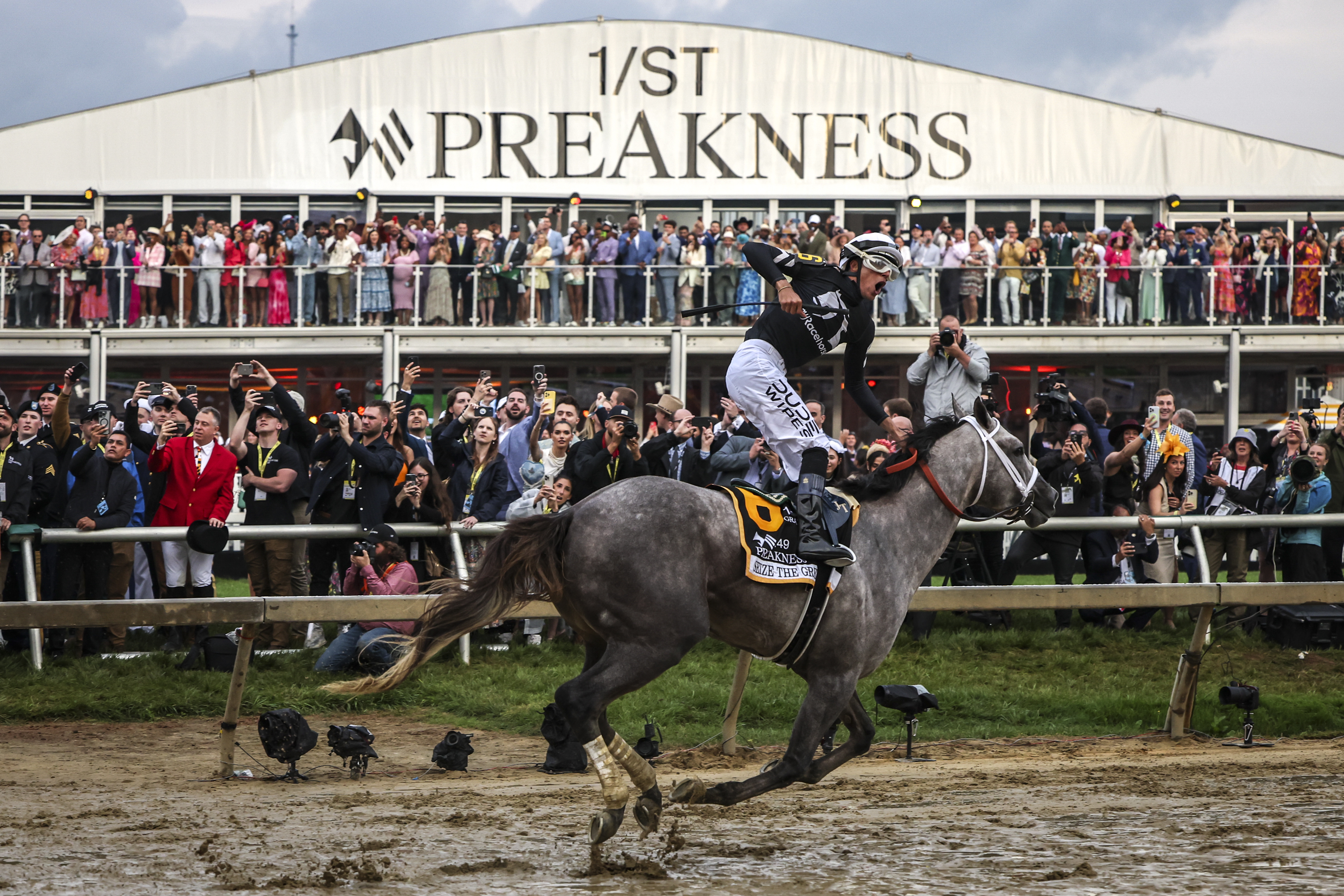
Seize the Grey wins 149th Preakness Stakes in a muddy and thrilling race
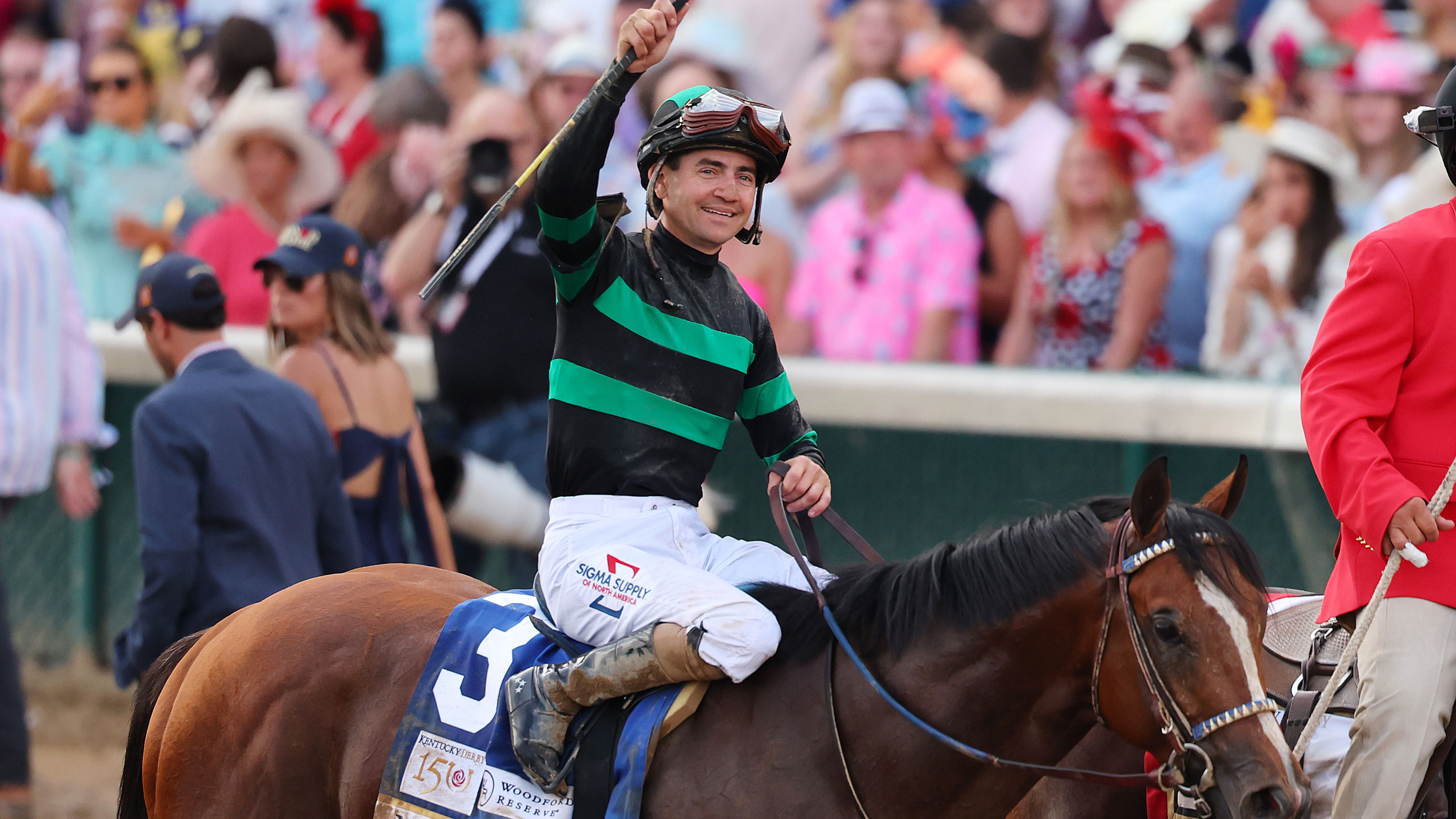
Preakness up next for jockey Brian Hernandez Jr. after winning Kentucky Derby with Mystik Dan
Where is the preakness stakes.
The Preakness Stakes is held annually at Pimlico Race Course in Baltimore. The venue can accommodate around 110,000 people on Preakness Day.
2024 Preakness Stakes schedule
The Black-Eyed Susan kicks off the weekend action on Friday, May 17, ahead of Preakness Day on Saturday, May 18.
The post time for the first Preakness Day race is 10:30 a.m. ET on May 18, with a full slate of action ahead of the main event at 6:50 p.m. ET.
The full Preakness Day schedule is available here .
How to watch the 2024 Preakness Stakes
NBC’s live coverage of the Preakness Stakes begins at 4:30 p.m. ET on Saturday, May 18. CNBC and Peacock will have live Preakness Day coverage from 1:30-4:30 p.m. ET.
Viewers can stream Preakness Day coverage on Peacock , NBCSports.com and the NBC Sports app.
Peacock will also have Black-Eyed Susan coverage starting at 4:30 p.m. ET on Friday, May 17.
Will Mystik Dan race in the Preakness Stakes?
Mystik Dan, the 2024 Kentucky Derby winner, will look to get one step closer to winning horse racing’s Triple Crown by racing in the Preakness Stakes . Trainer Kenny McPeek announced the decision on Saturday.
2024 Preakness Stakes horses
Mystik Dan may be the horse to watch in the 2024 Preakness, but he isn't the favorite.
Renowned trainer Bob Baffert was not able to enter a horse into the Kentucky Derby this year, but he will be back for the Preakness. Muth, the 11-10 favorite to win at Pimlico, was scratched , but Baffert's other entry, Imagination, is listed at 5-1.
Here are the current post positions for the 2024 Preakness Stakes:
- Uncle Heavy
- Catching Freedom
- Seize The Grey
- Tuscan Gold
- Imagination
2024 Preakness Stakes prize money
The total purse for the 2024 Preakness Stakes is $2 million.
The Belmont Stakes also has a $2 million purse, while the Kentucky Derby's is set at $5 million .
This article tagged under:

COMMENTS
America made its name later that summer when it joined 15 yachts for the Royal Yacht Squadron's race around the Isle of Wight. The prize was a trophy costing just £100, but such was America's reputation after its convincing win that the syndicate sold the boat for $25,000 — about $5,000 more than they'd paid for it.. Since then, countless sums have been spent on attempts to win the ...
• The top three teams from qualifying advance to a final race to be crowned event champion and earn the largest share of the $300,000.00 USD event prize money purse (increases to $400k after Abu ...
Great Britain and Australia won $35,000 and $15,000 respectively for second and third place, and donated the money to their Race to the Future partners. Season three of SailGP will begin in ...
The United States SailGP Team in action on Sept. 11 during a race in St.-Tropez, France. David Ramos/Getty Images. By David Schmidt. Oct. 8, 2021. With $1 million and a season's title up for ...
Kirsten Neuschafer made it very clear from the start that she was aiming to win the 2022 Golden Globe Race. And now the South African skipper has achieved her goal, and made history in the process. After just over 235 days at sea, the sailor crossed the finish line off Les Sables d'Olonne in France at 9pm CEST on 27 April 2023 and became the ...
Russell Coutts Likes Sailing Races With Big Money at Stake. One of the great sailors in history now runs an elite racing series for high-speed yachts. SailGP will end its season this weekend with ...
The America's Cup is a sailing competition and the oldest international competition still operating in any sport. America's Cup match races are held between two sailing yachts: one from the yacht club that currently holds the trophy (known as the defender) and the other from the yacht club that is challenging for the cup (the challenger). The winner is awarded the America's Cup trophy ...
It is a winner-takes-all format. The America's Cup is famously a race in which, as Queen Victoria was informed during the first contest in 1851, "there is no second.". The America's Cup is a magnet for the world's most talented sailors, including BOAT columnist Sir Ben Ainslie. Image courtesy of Tom Jamieson.
The race started on 4 September 2022, with the competitors passing a rolling gate between the yachts Galiana and L'Esprit d'Equipe. The official starter was Sir Robin Knox-Johnston, the winner of the original Golden Globe Race. [15] The race concluded on 15 June 2023 with the last competitor, Jeremy Bagshaw, arriving back at Les Sables d ...
America raced against 15 yachts from the Royal Yacht Squadron in their annual 53-mile race around the Isle of Wight, coming in first place, 8 minutes ahead of the second finisher. Their prize was a trophy called the '£100 Cup' (also known as 'The 100 Guineas Cup'), subsequently renamed after the winning yacht, to the Americas Cup.
The America's Cup will be held in 2024 in Barcelona. Racing in the 37th America's Cup Match itself, which is a best of 13 (first to seven) format will start on Saturday 12th October 2024 and ...
Race participants in Baltimore Inner Harbor, 2006. The Ocean Race is a yacht race around the world, held every three or four years since 1973. Originally named the Whitbread Round the World Race after its initiating sponsor, British brewing company Whitbread, in 2001 it became the Volvo Ocean Race after Swedish automobile manufacturer Volvo took up the sponsorship, and in 2019 it was renamed ...
Fuel — $88. Propellers — $1,500. Drives — $5,500. Spare parts — $4,000. Boat (used) — $55,000. Total — $162,588. The cost may be high and the return on investment negligible, but for ...
For the best in domestic offshore racing action, the Super Boat International World Championships in Key West, Fla., are the place to be. The event usually is held during the second week of November, and it features a three-race—Wednesday, Friday, and Sunday—format. ... Mercury Racing Ups Offshore Prize Money. Staff. January 30, 2003. High ...
The construction of the custom cradle that will sit on top of a 20ft open top container is complete and has been transferred to the port where it will be assembled and Ari's boat will be loaded tomorrow in Durban, South Africa, onto the ship "MACS Green Mountain" and is due to be offloaded in Hambourg, Baltic Sea, on June 13th.
The winners will share prize money while gifts provided by our official supplier 727 Sailbags will be distributed to the best ranked photographers present on site. ... Official opening of the Yacht Racing Image Award The prize-giving will take place during the Yacht Racing Forum The 15th edition of the international photography competition ...
Updated: April 10, 2002. Royal Perth Yacht Club burst back onto the international sailing scene with the launch of a spectacular and innovative new ocean race, starting and finishing in Fremantle. With a total prize purse of US $6.4 million, the race will pass the three notorious Capes, Leeuwin, Horn and Good Hope, to port, and take about 45 ...
The Golden Globe Race required sailors to leave France on Sept. 4, 2022 and sail around the world. Kirsten Neuschäfer, from South Africa, won the 2022 race once she crossed the finish line on ...
Yacht racing is about sponsorship rather than prize money. They asked the sailors what they would spend their "prize" money on. My top favorite answers - - Some McDonalds hamburgers - A haircut - Pay my two month's back rent - A tour card for 2010 These were the top professoinal sailors in their sport.
In 2016, Perpetual LOYAL became the fastest-ever boat to complete the race, setting a new race record of 1 day, 13 hours, 31 minutes, and 12 seconds. That record has since been broken by LDV ...
The Rolex Sydney Hobart Yacht Race is an annual event hosted by the Cruising Yacht Club of Australia, starting in Sydney, New South Wales, ... It generally costs each of the major contenders for line honors millions of dollars to equip themselves for the race, however there is no prize money. The only award is a Rolex watch from the race ...
Preakness purse 2024: Winner's prize money, total purse The winner of the 2024 Preakness Stakes will take home a monster $1.2 million, a huge portion and more than 50% of the total $2 million ...
That has not been the case for the NASCAR All-Star race. For the past 21 years, the prize money has remained at $1 million for the winner. It will be the case again in 2024.
For his efforts, Schauffele will take home the top prize of $3.33 million, a record-high winner's share for the championship. DeChambeau will bank $1,998,000 as a consolation prize. DeChambeau ...
The official prize money breakdown for the 2024 Preakness has not officially been revealed, however these are the expected payouts, based on how much the purse increased from 2023 to 2024 ...
Here's how the prize money will be paid out at Valhalla Golf Club in Louisville, Kentucky, to the 78 players who made the cut. 1st: $3,300,000 2nd: $1,998,000 3rd: $1,258,000 4th: $888,000 5th ...
The first race started at 09:30 on Thursday 10 August 1826 with the prize of a "Gold Cup of the value of £100" and was held under the flag of the Royal Yacht Club, which later became the Royal Yacht Squadron. Another race was held the next day for prize money only (£30 for first place, £20 for second).
The purse for this year's race was $2 million, the highest in Preakness history. As a result, the owners of Seize the Grey − MyRacehorse, which sells public shares of the horse − will get $1.2 ...
The Preakness Stakes is an annual horse race and the second leg of horse racing's Triple Crown. The race itself is 1 3/16 miles. ... 2024 Preakness Stakes prize money.
The teams of The Amazing Race 36 traveled to Eight countries, 14 cities, and almost 12,000 miles. But after a season of intense heat, navigational woes, and unprecedented eliminations, only four ...